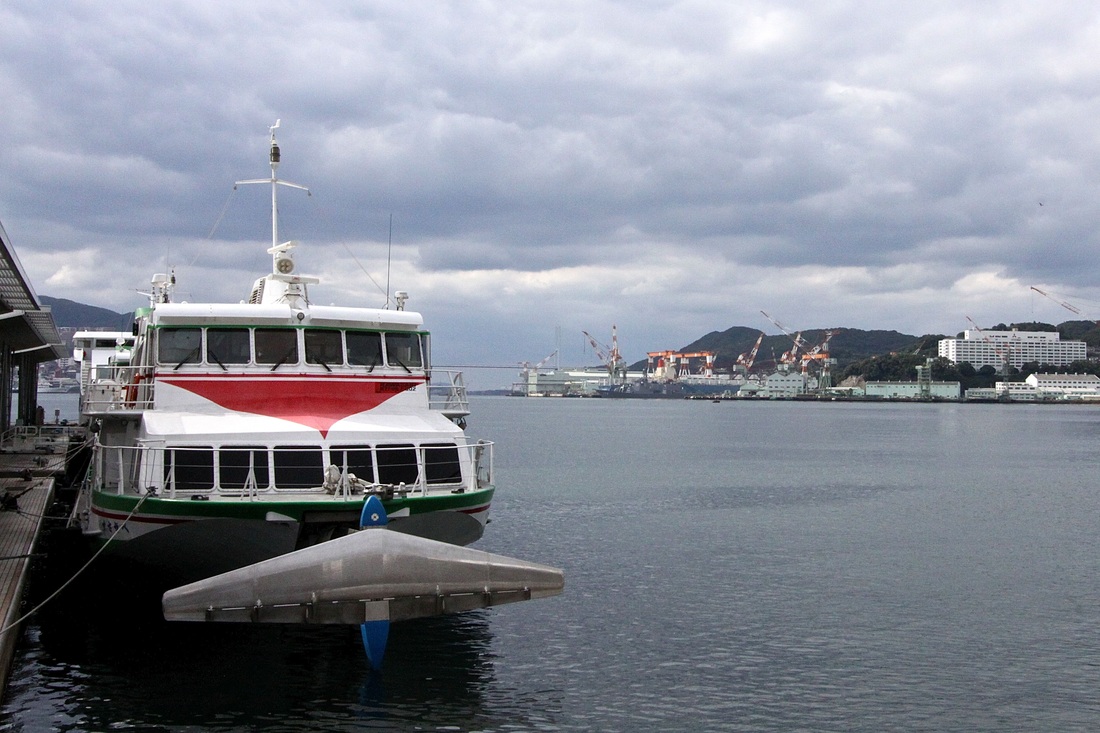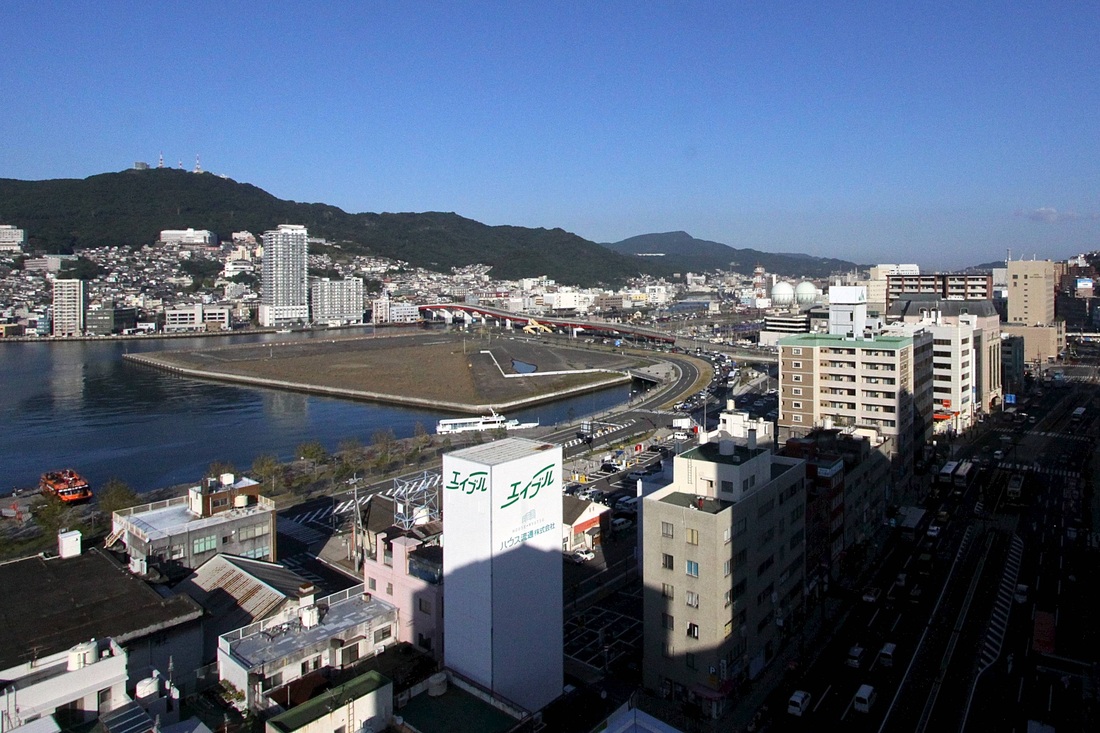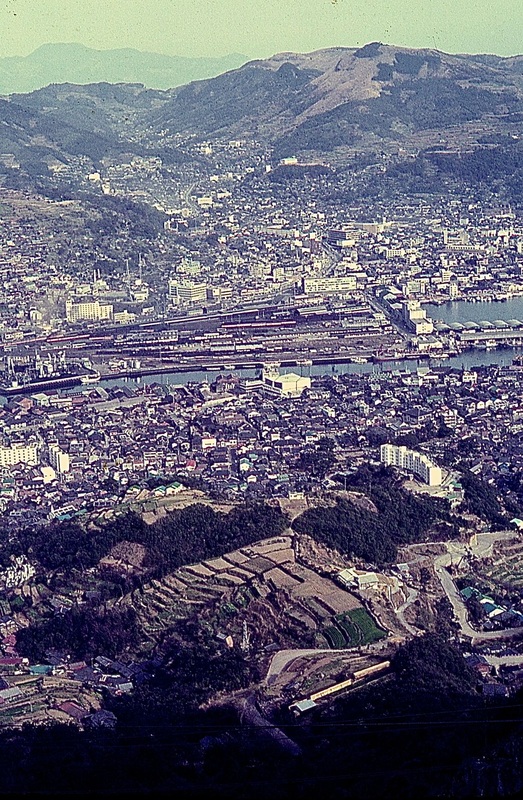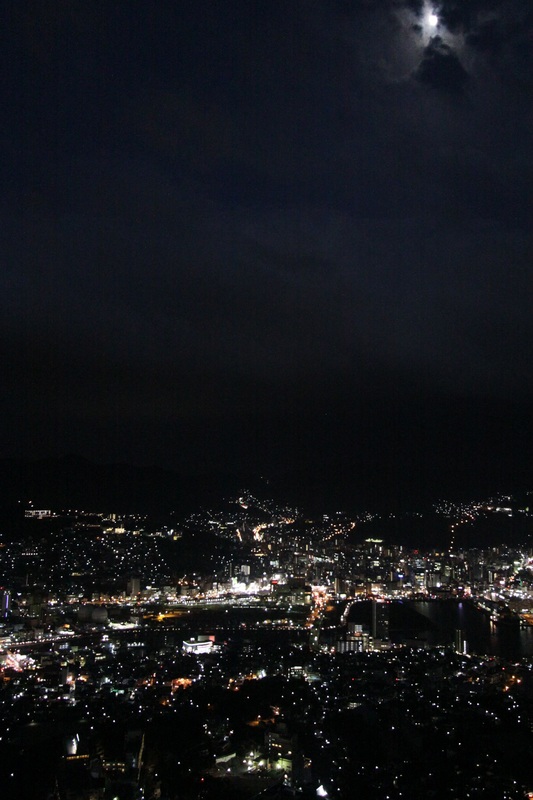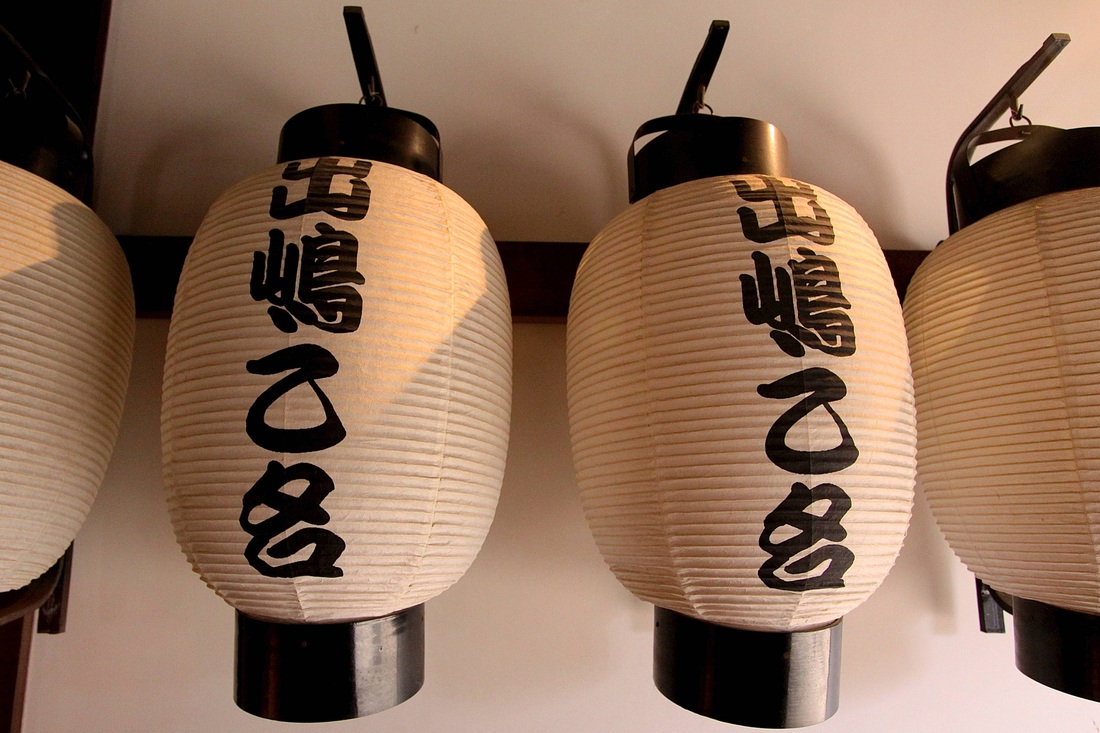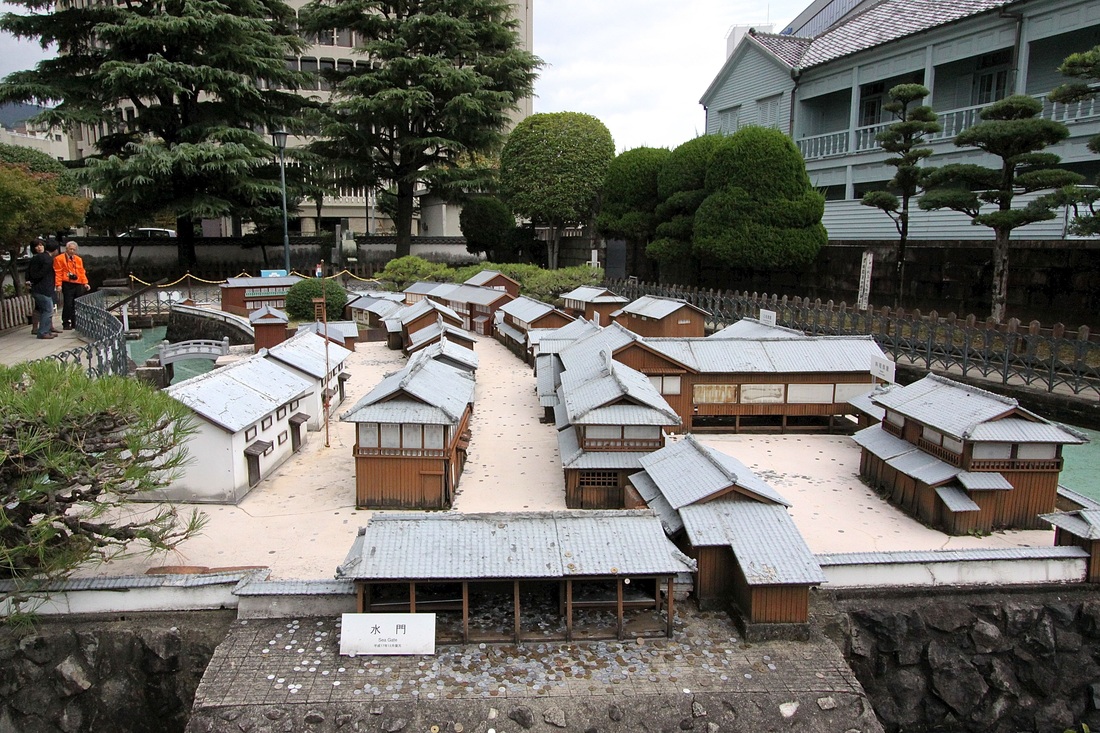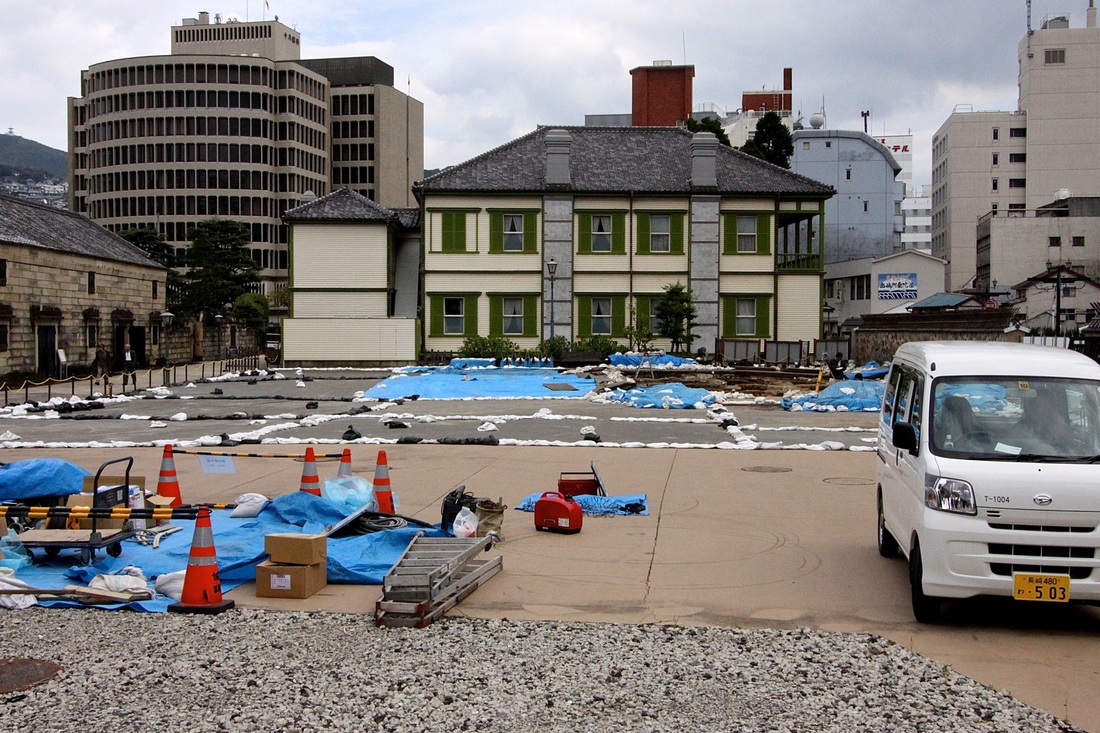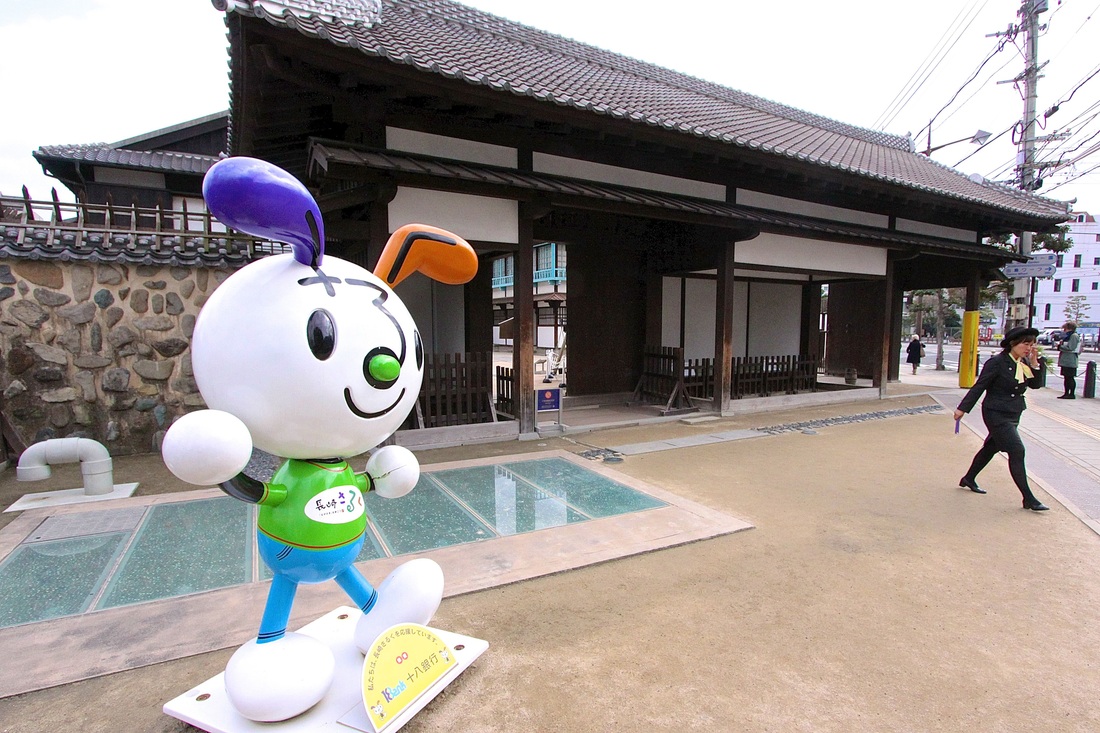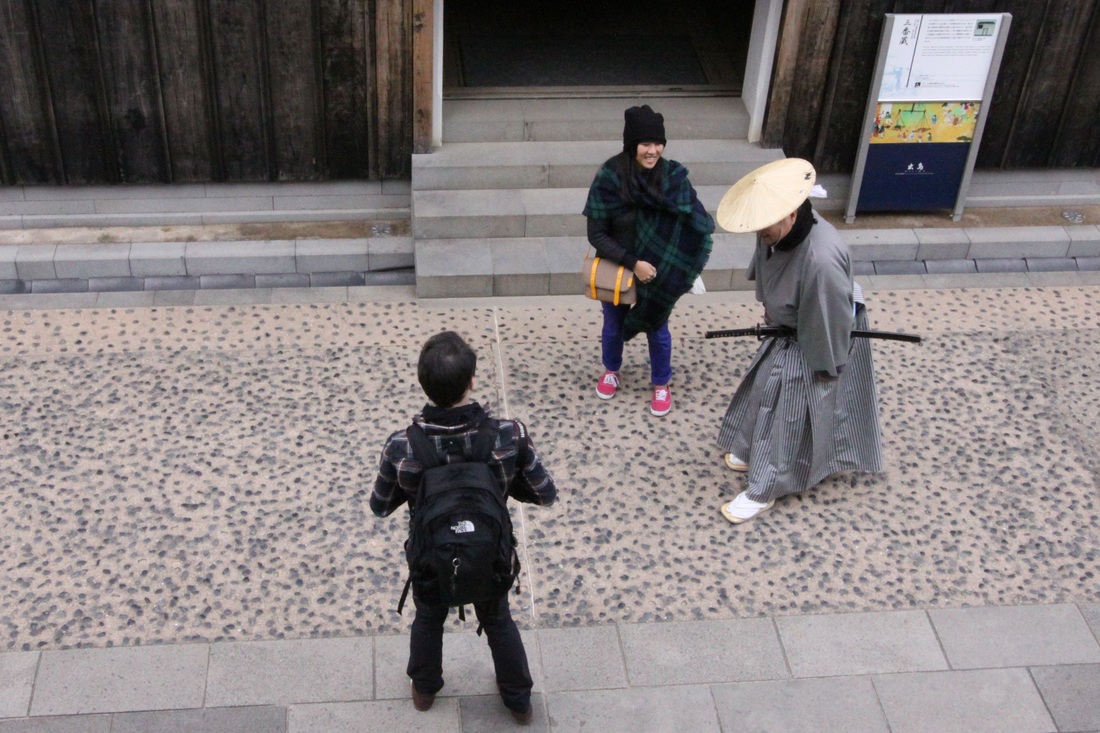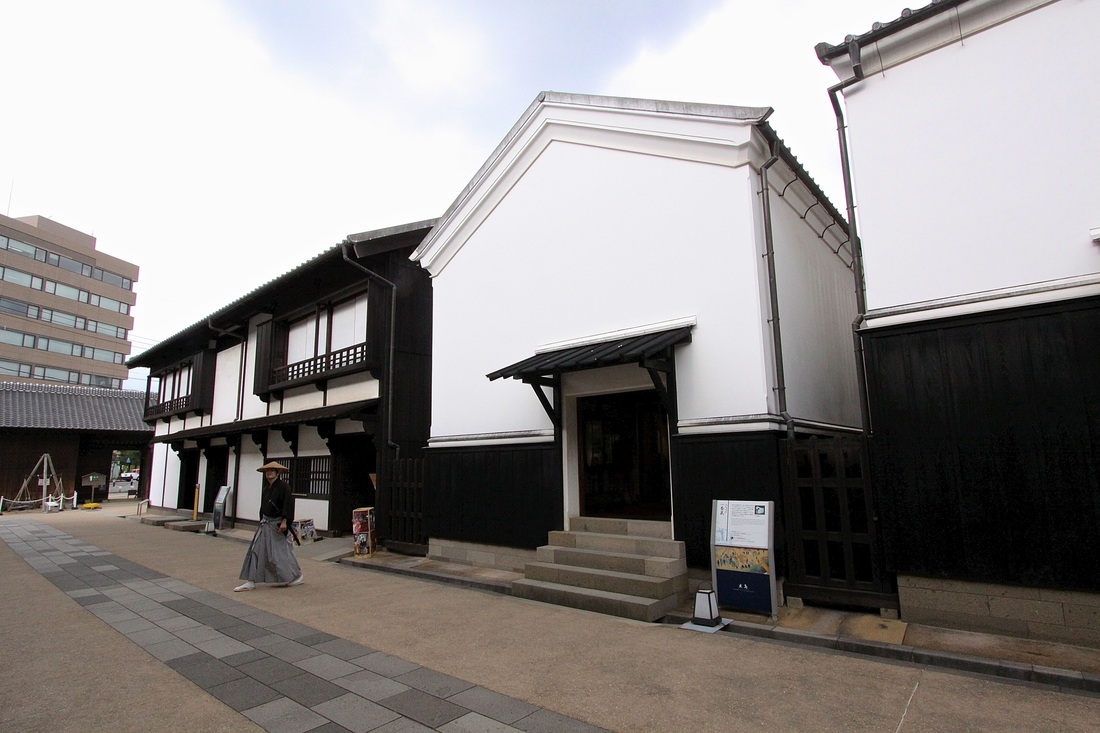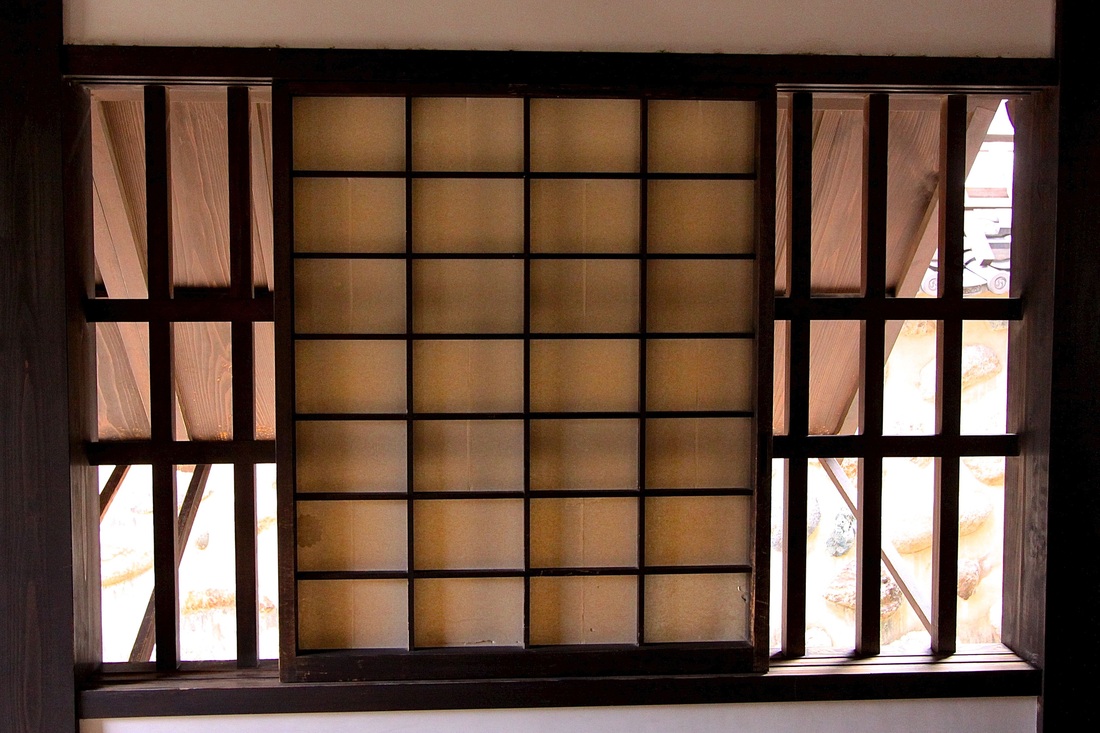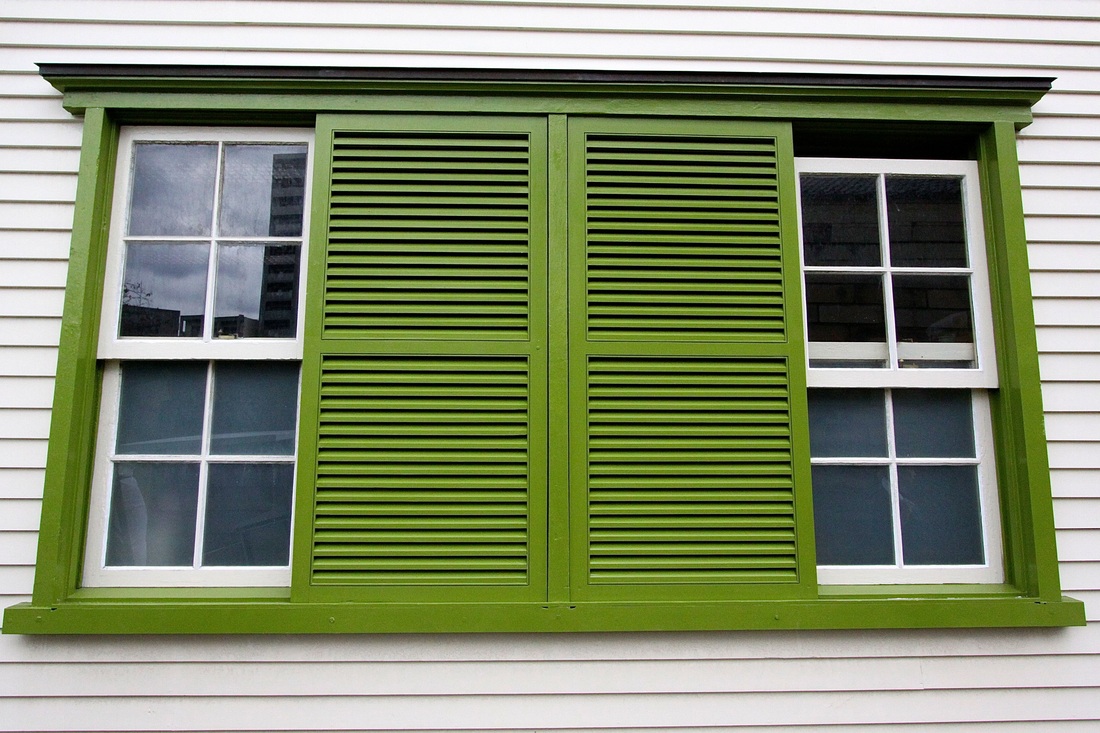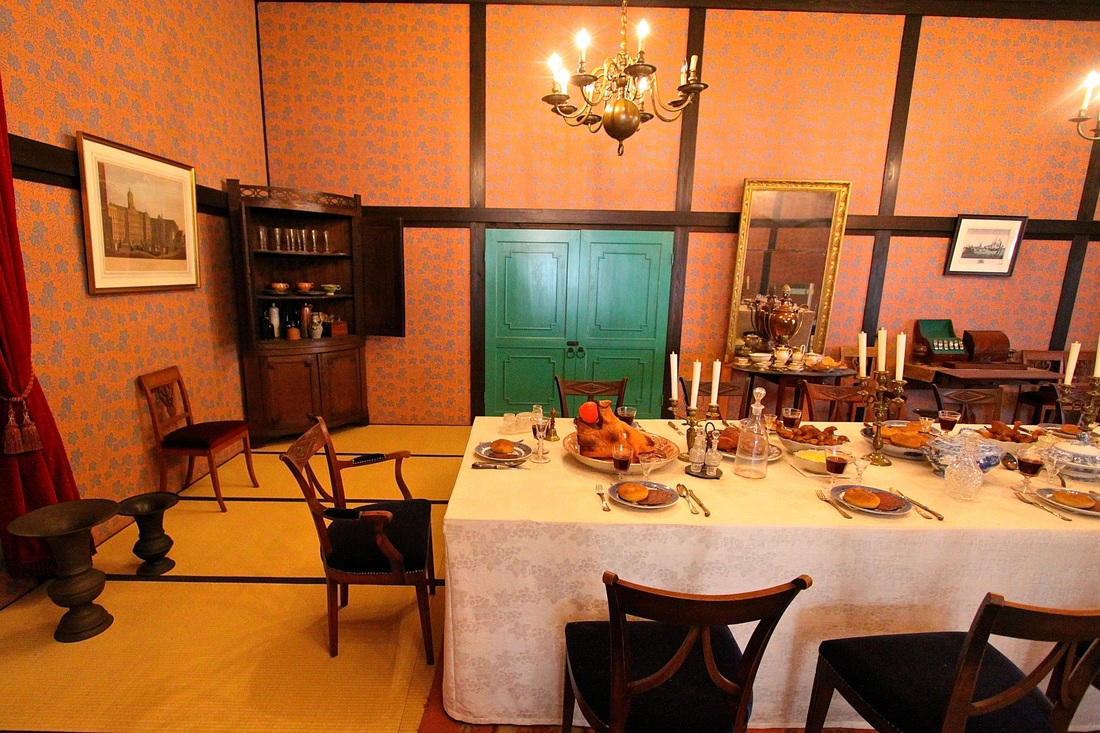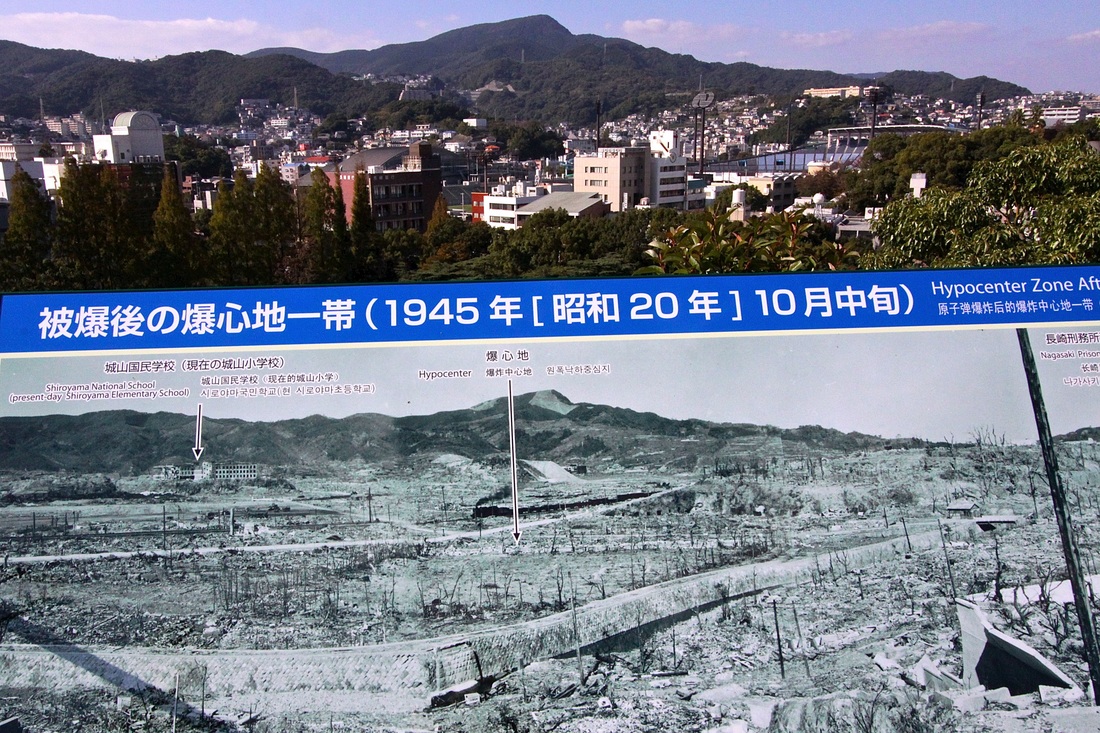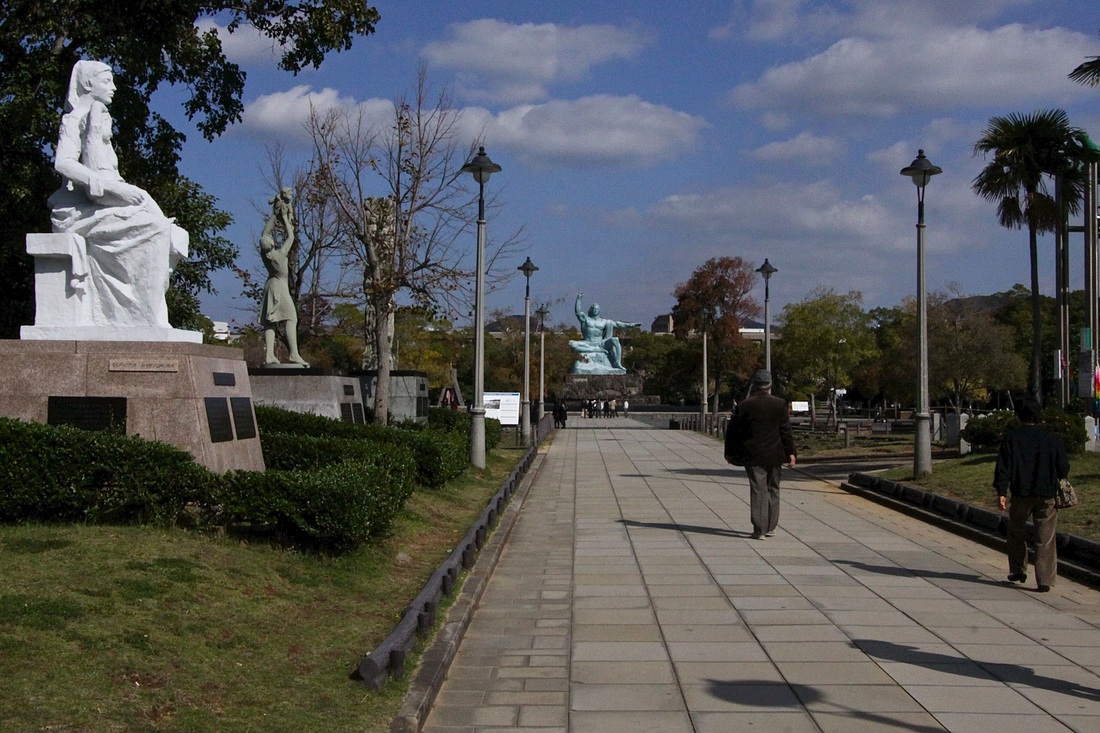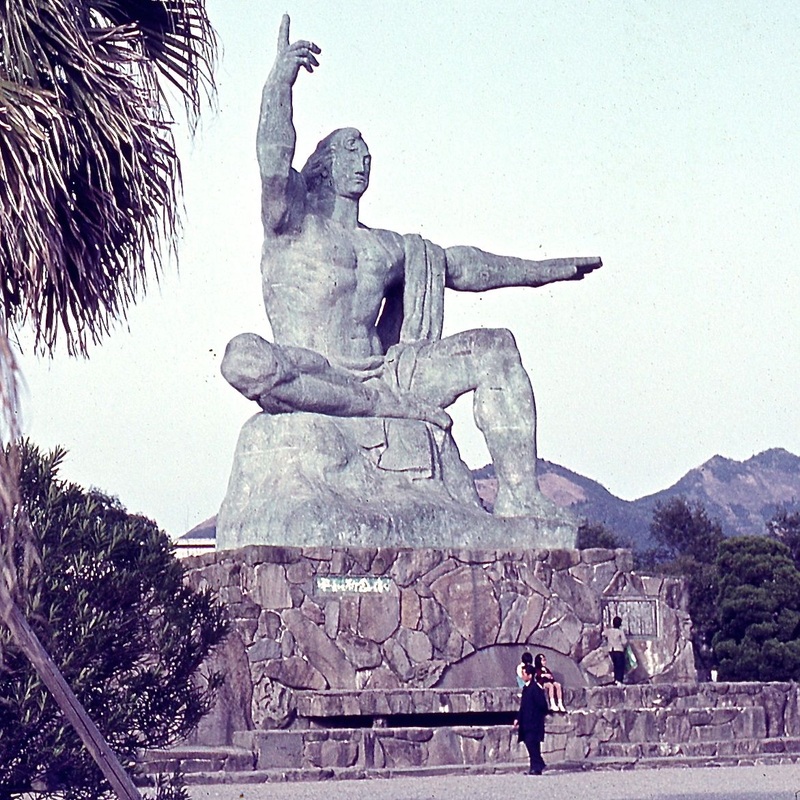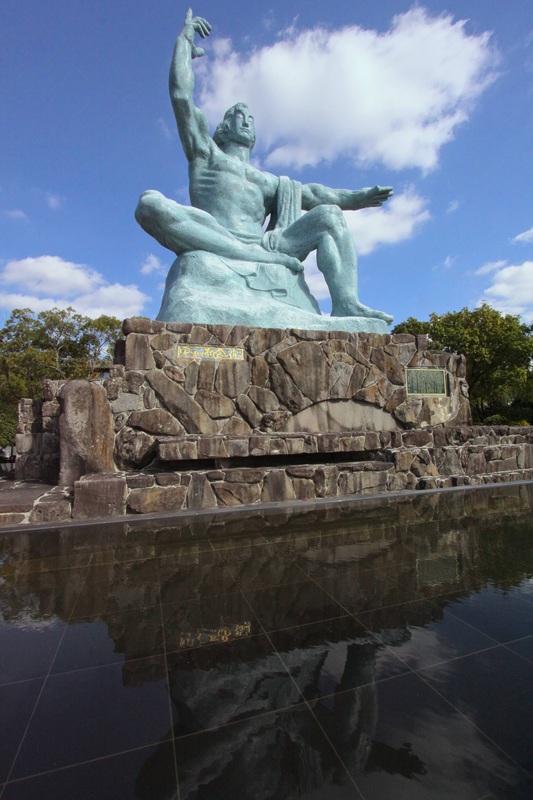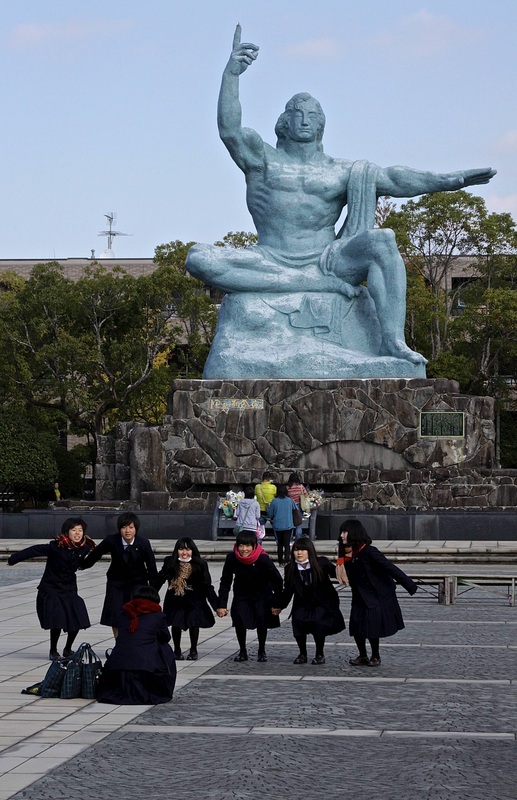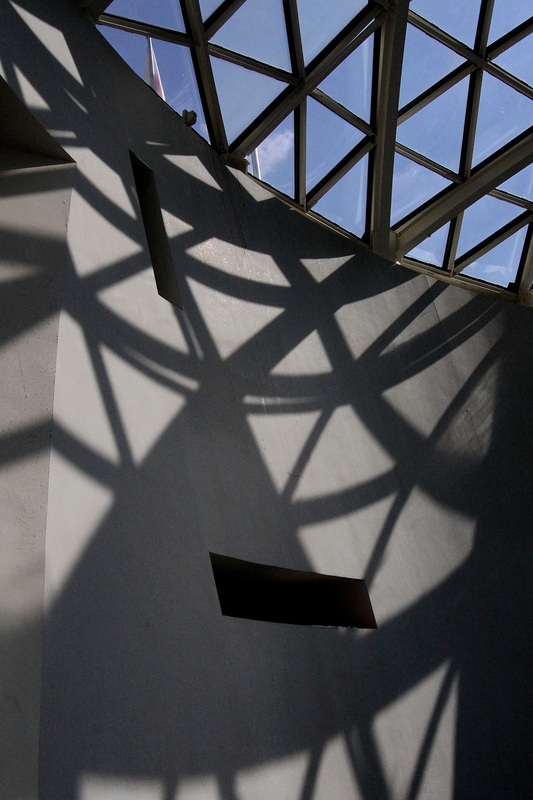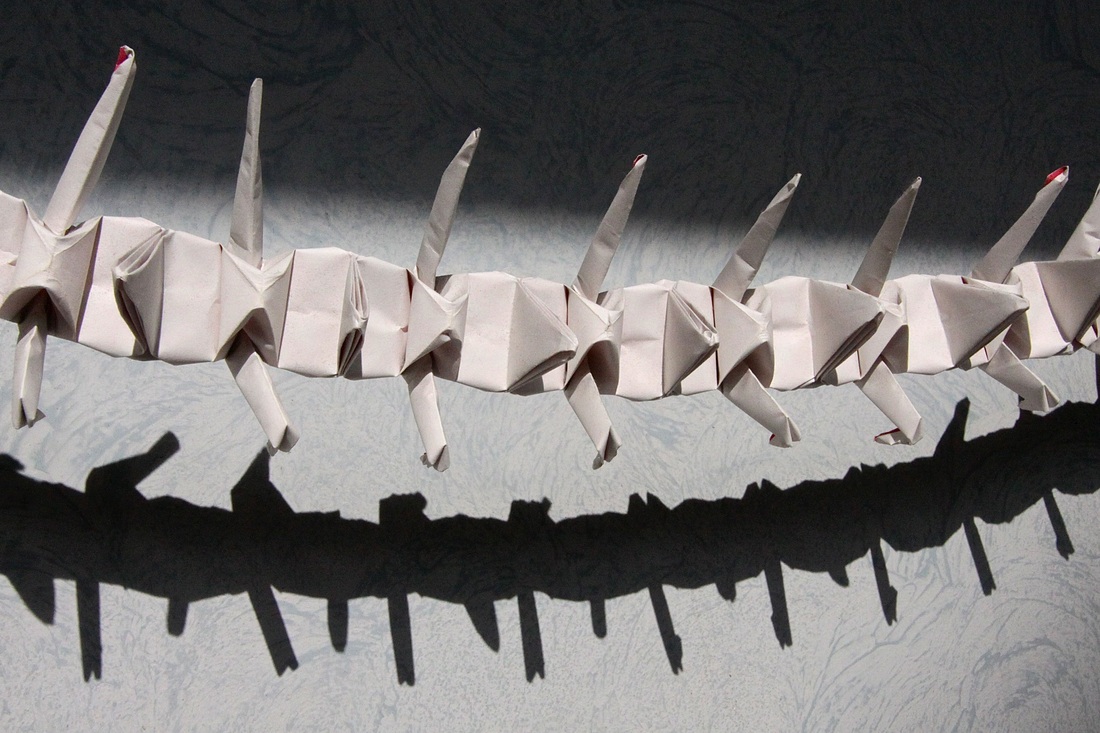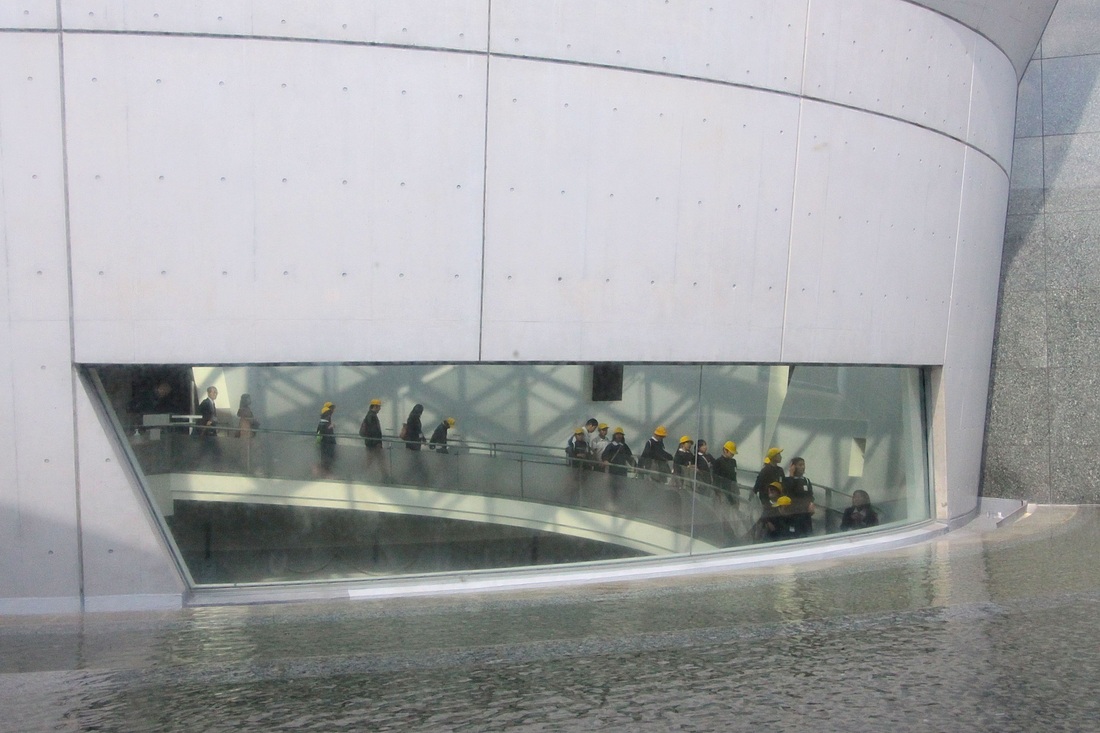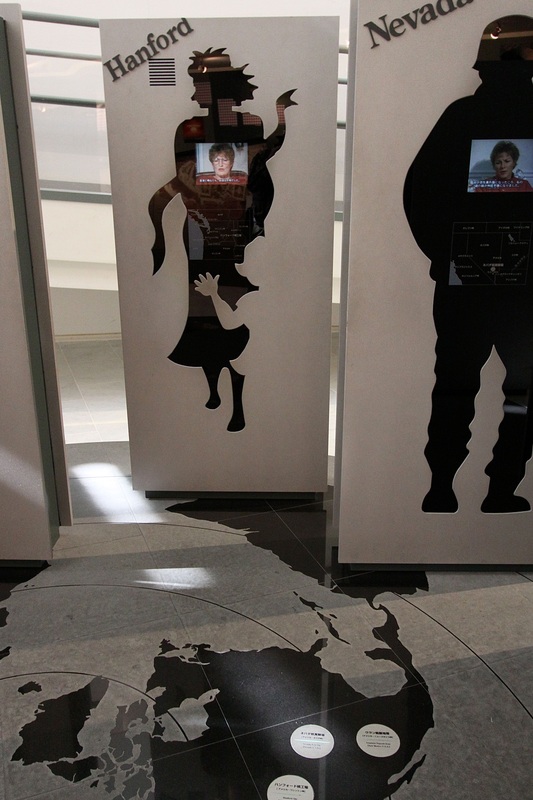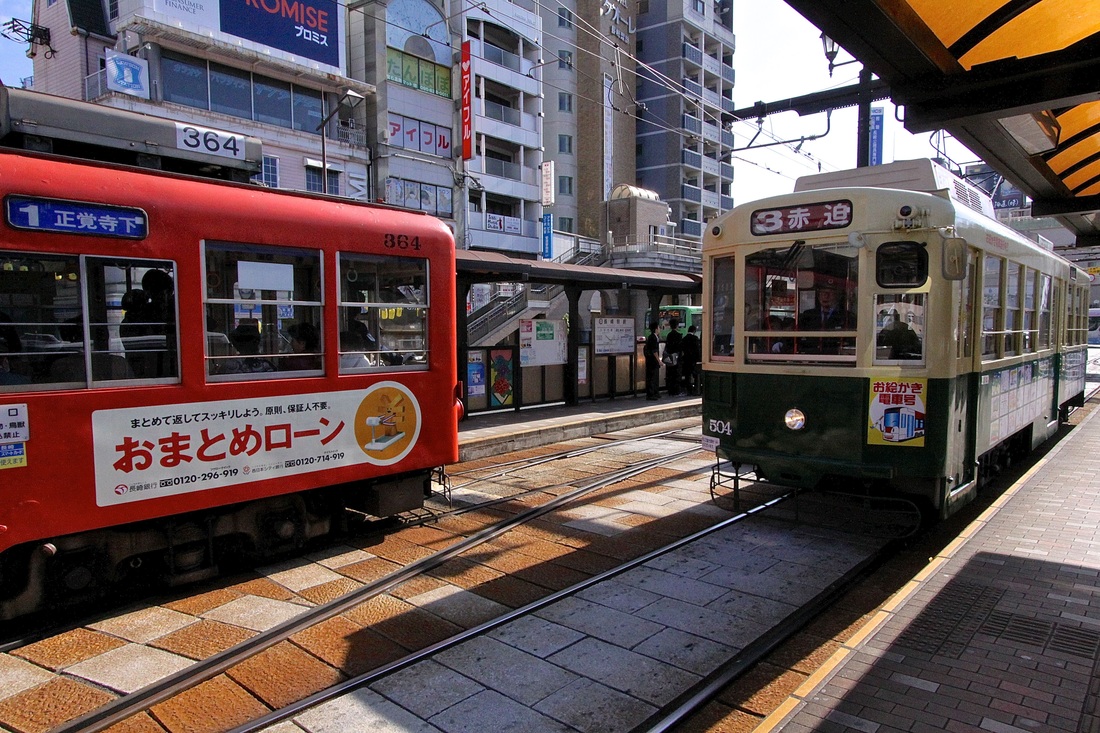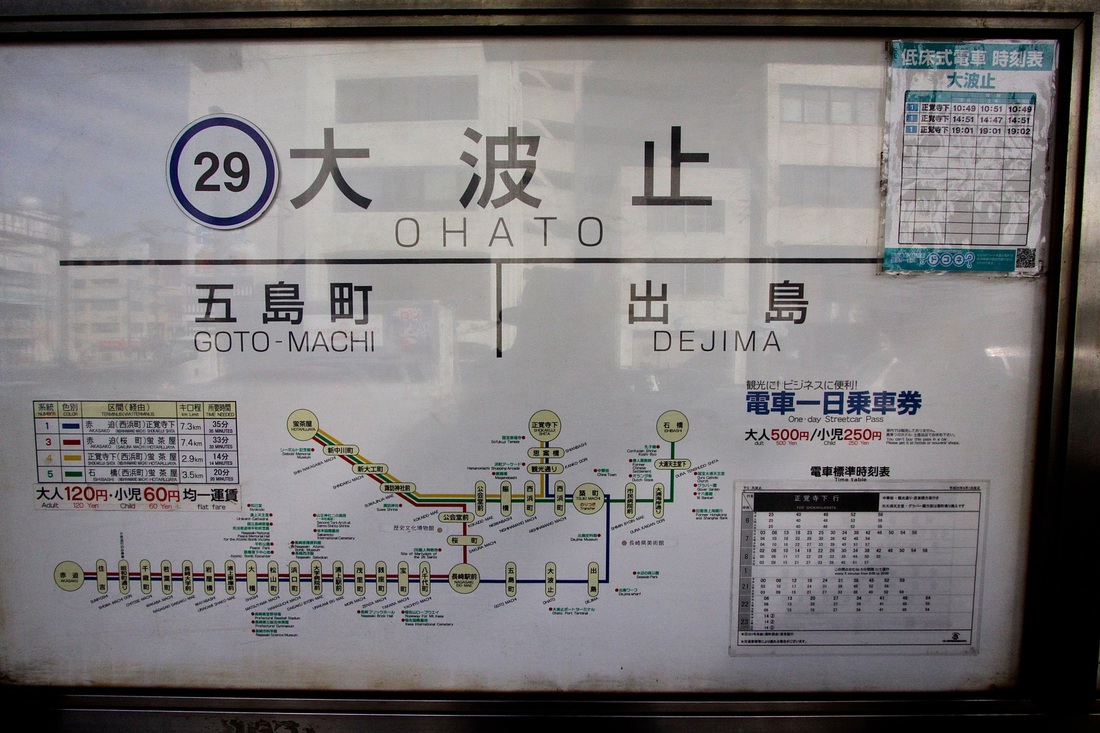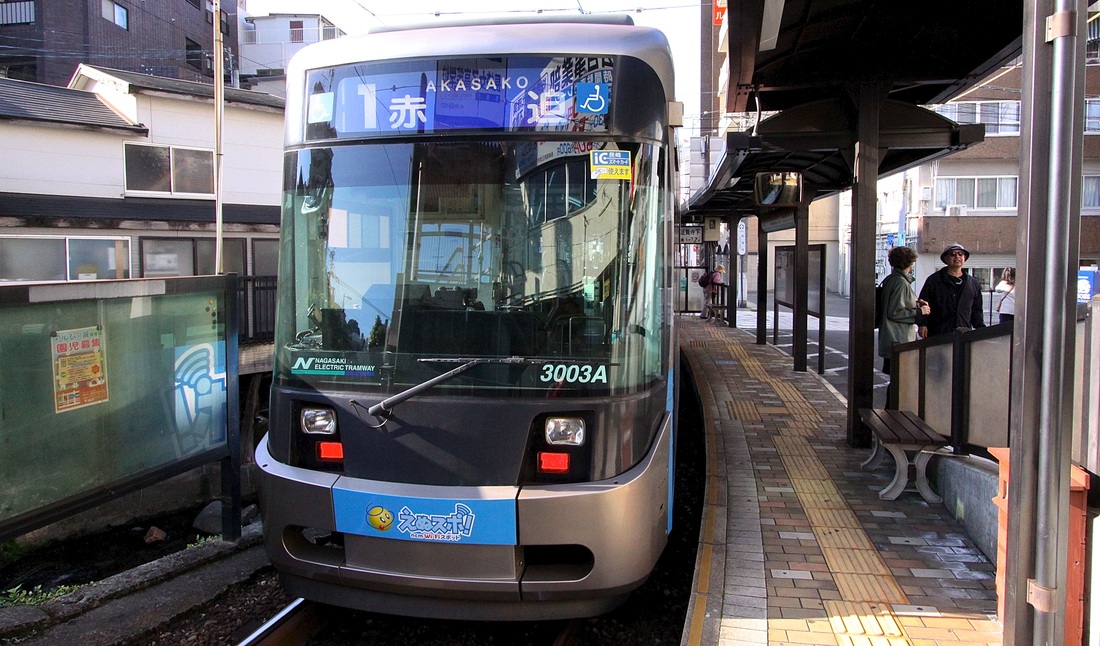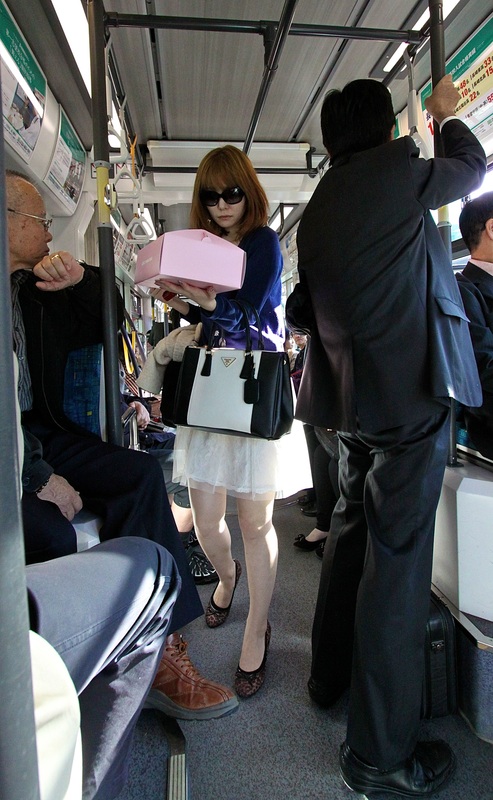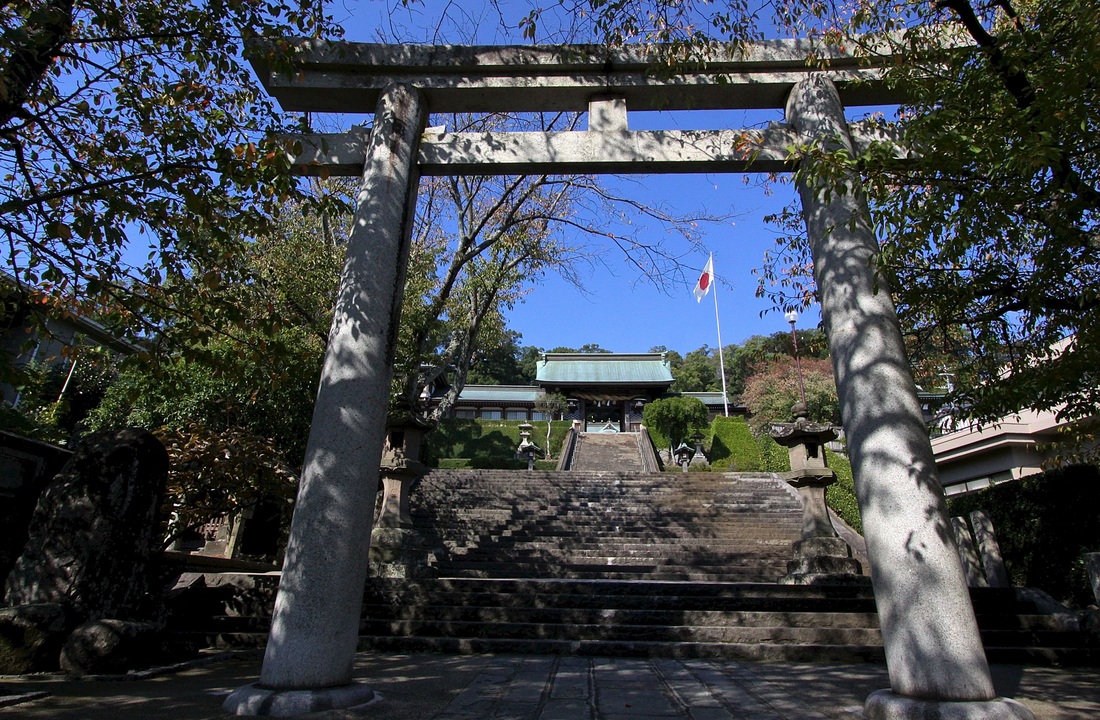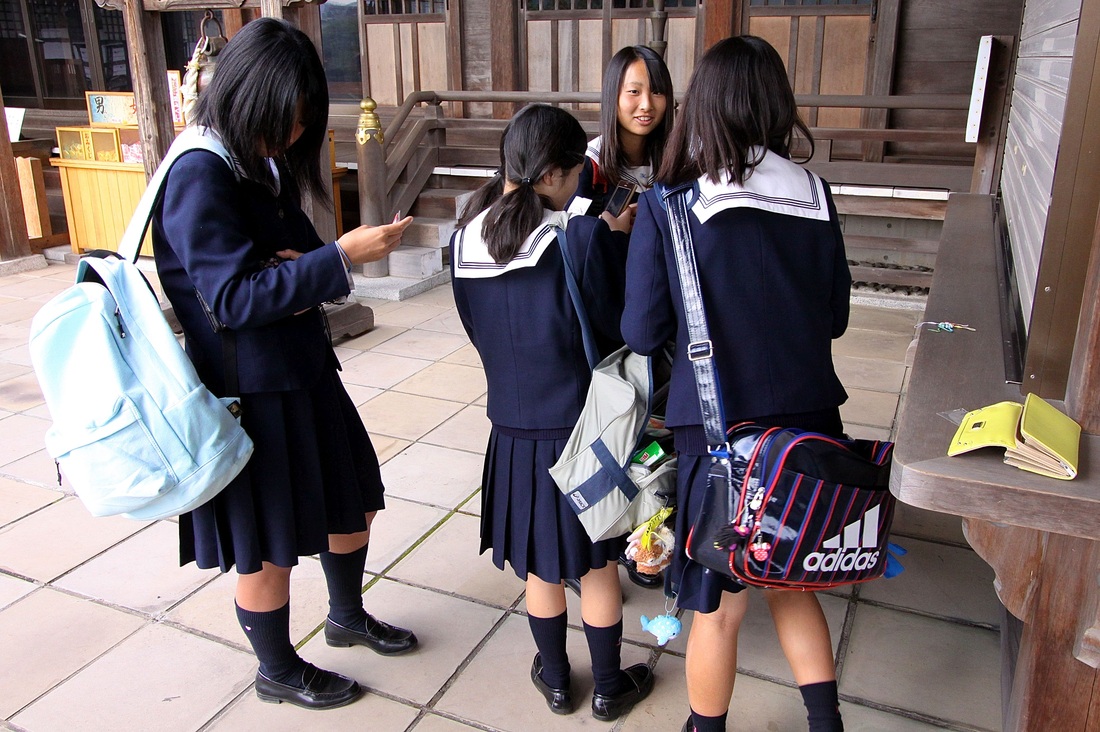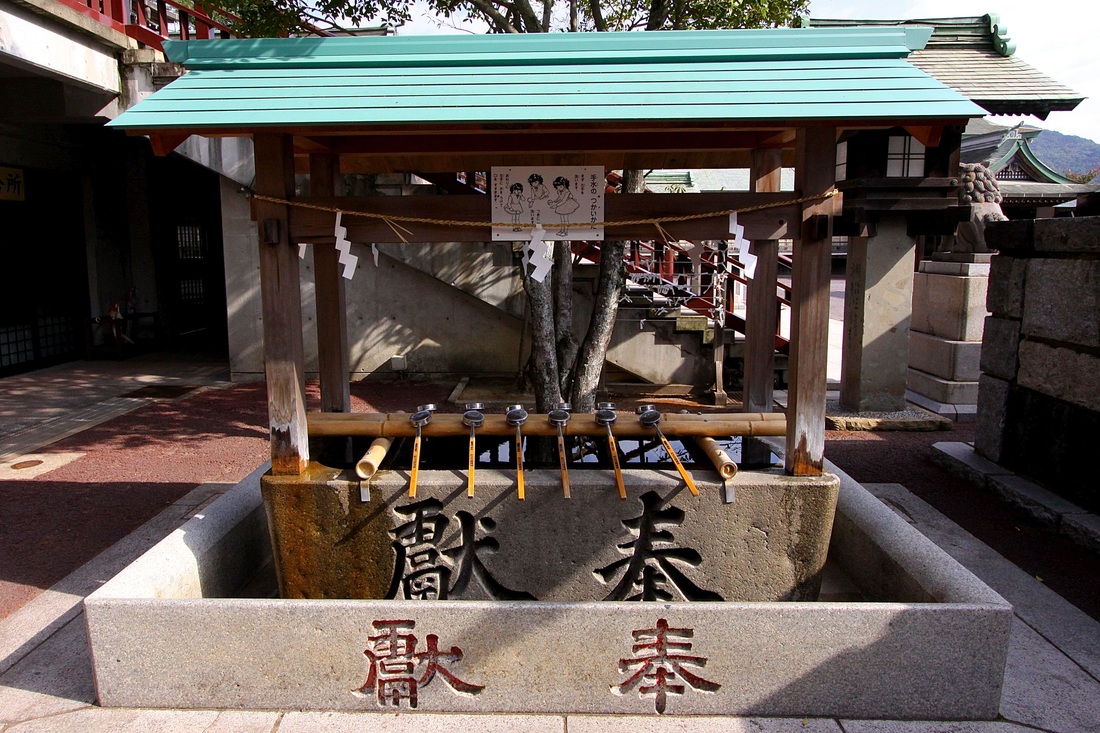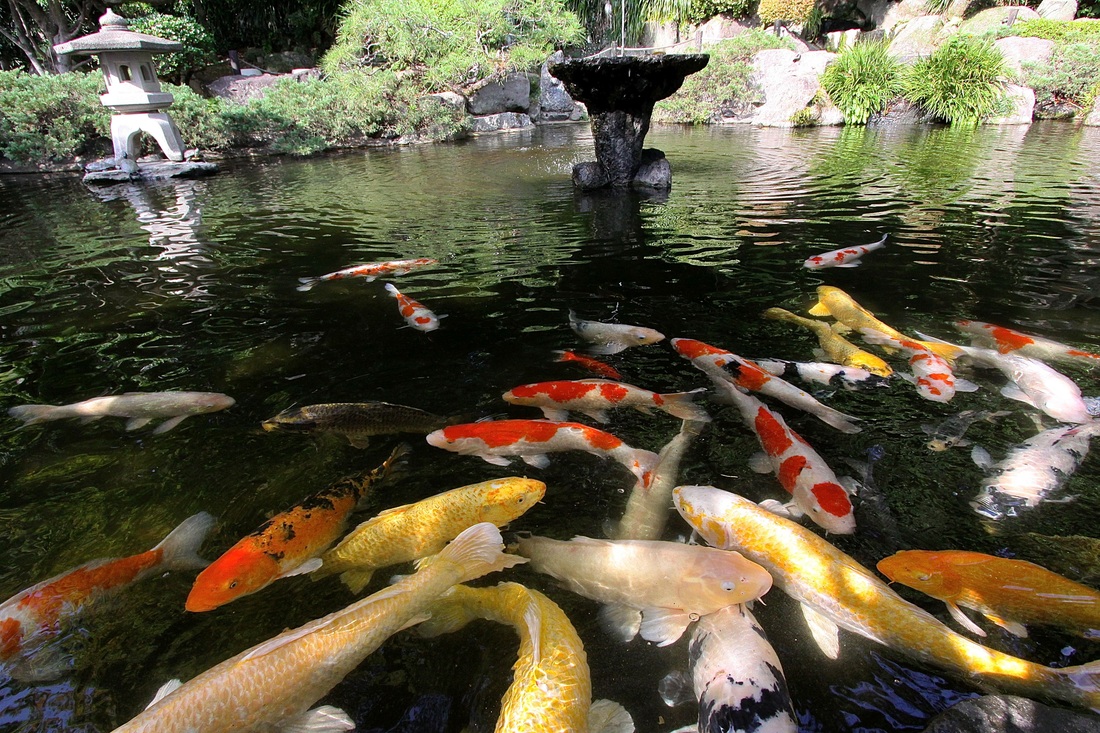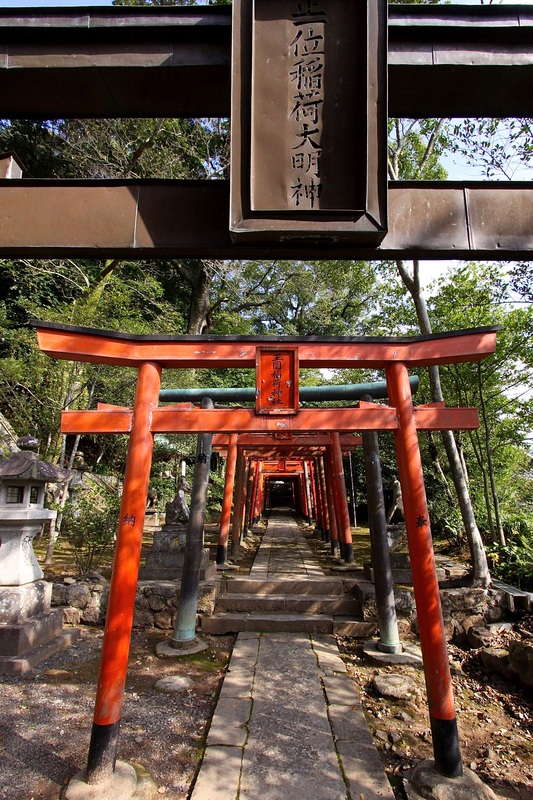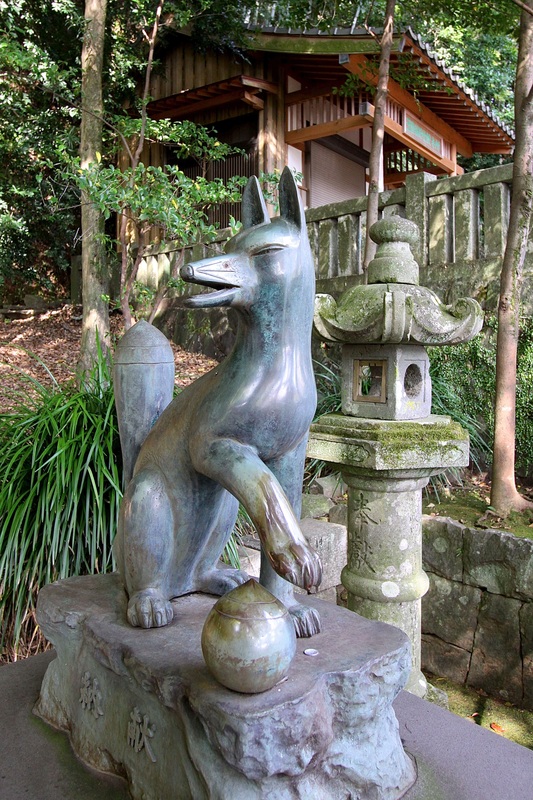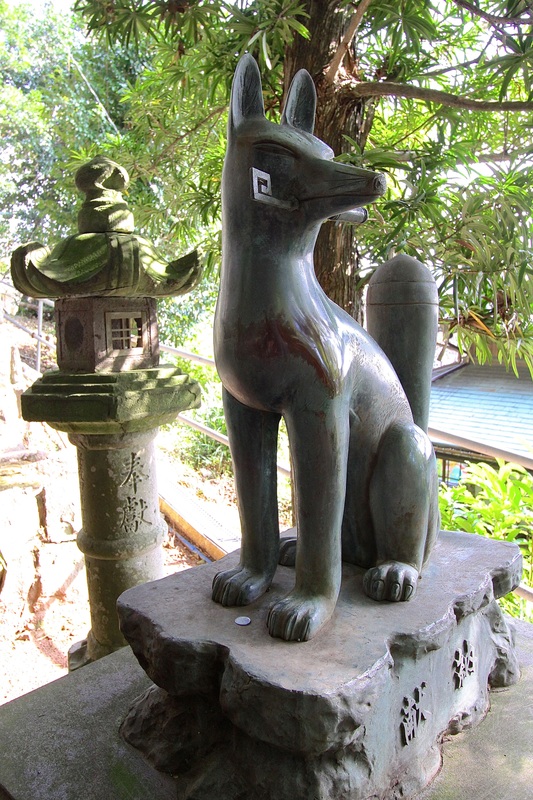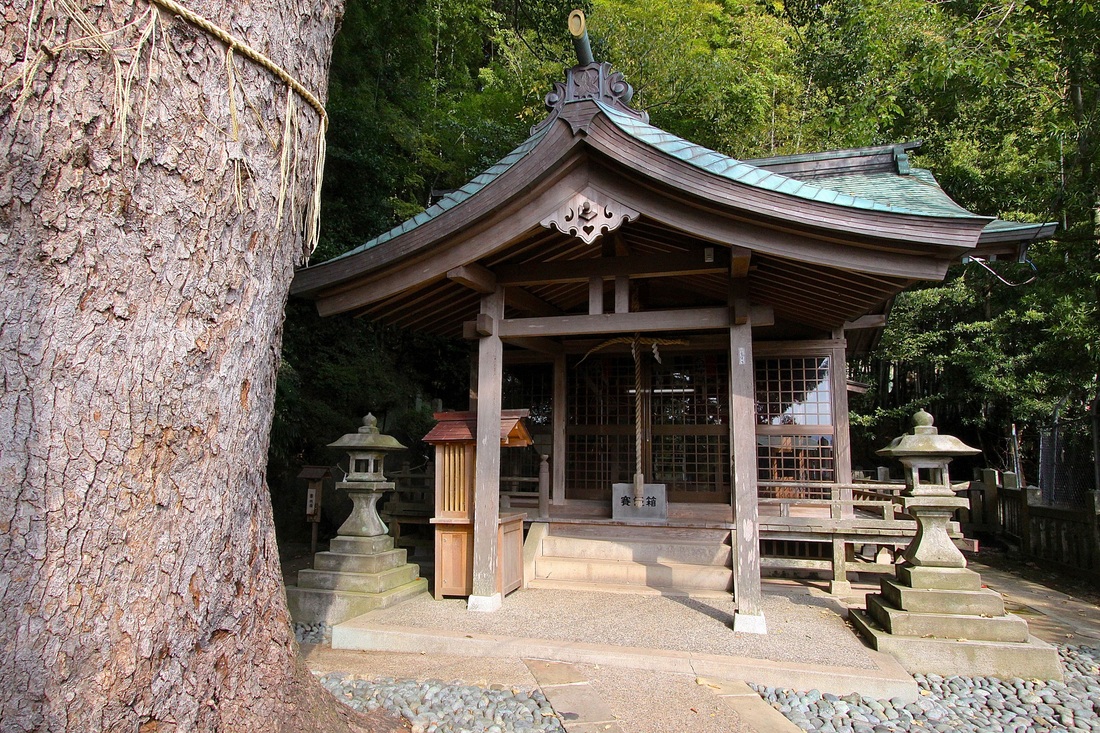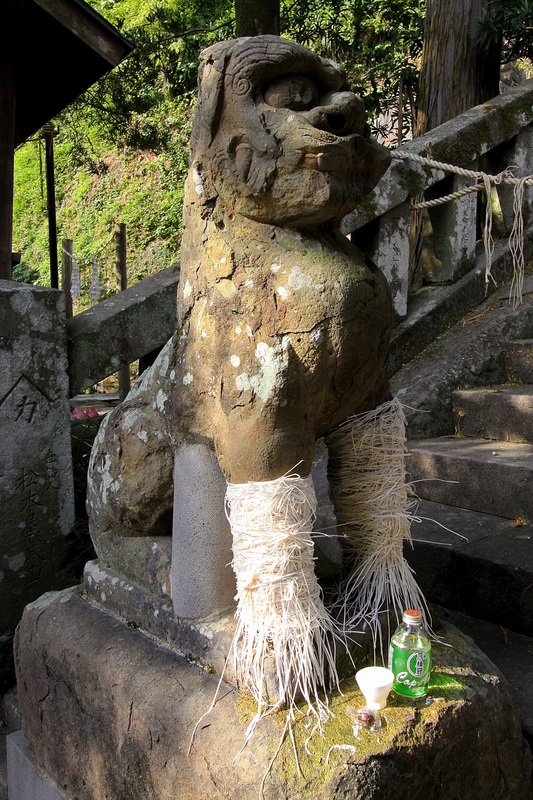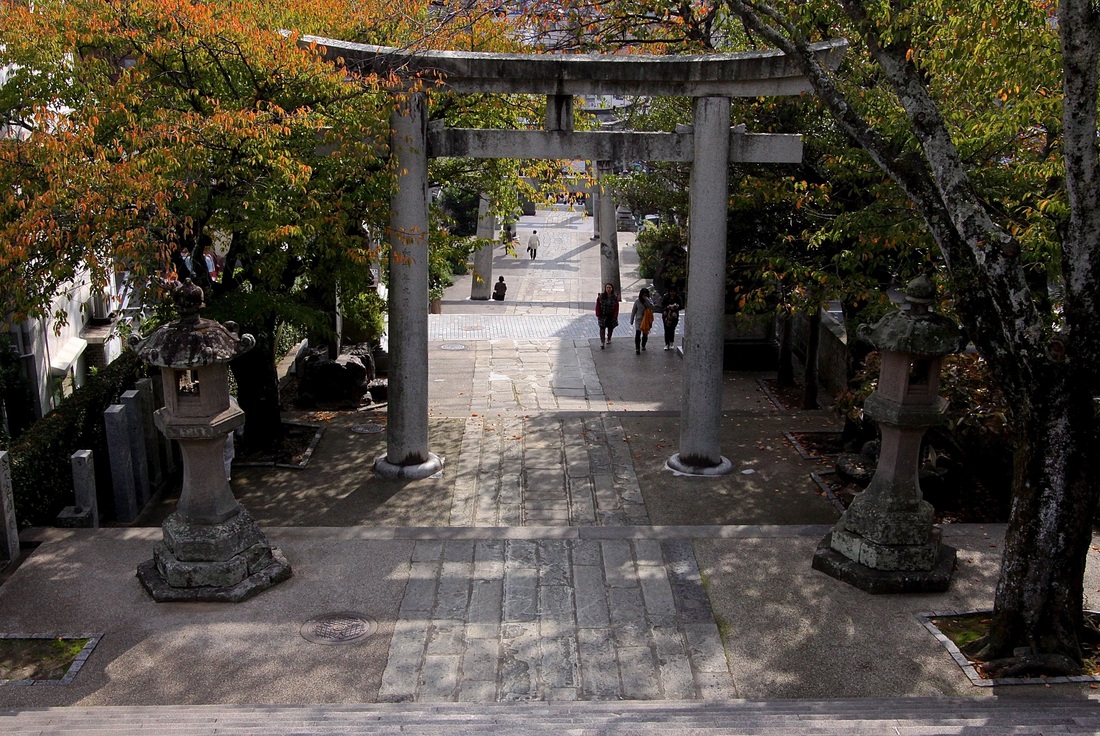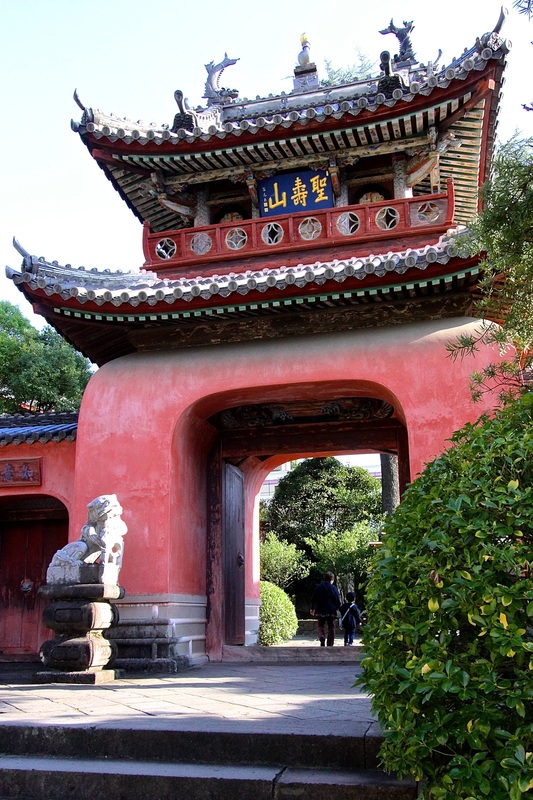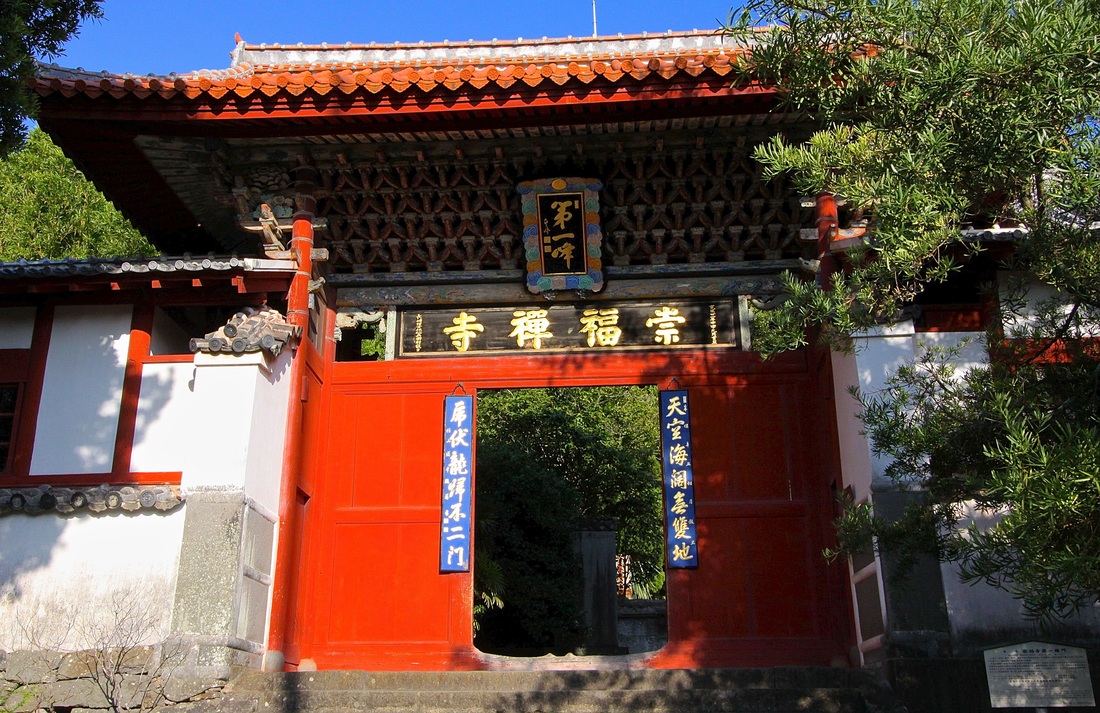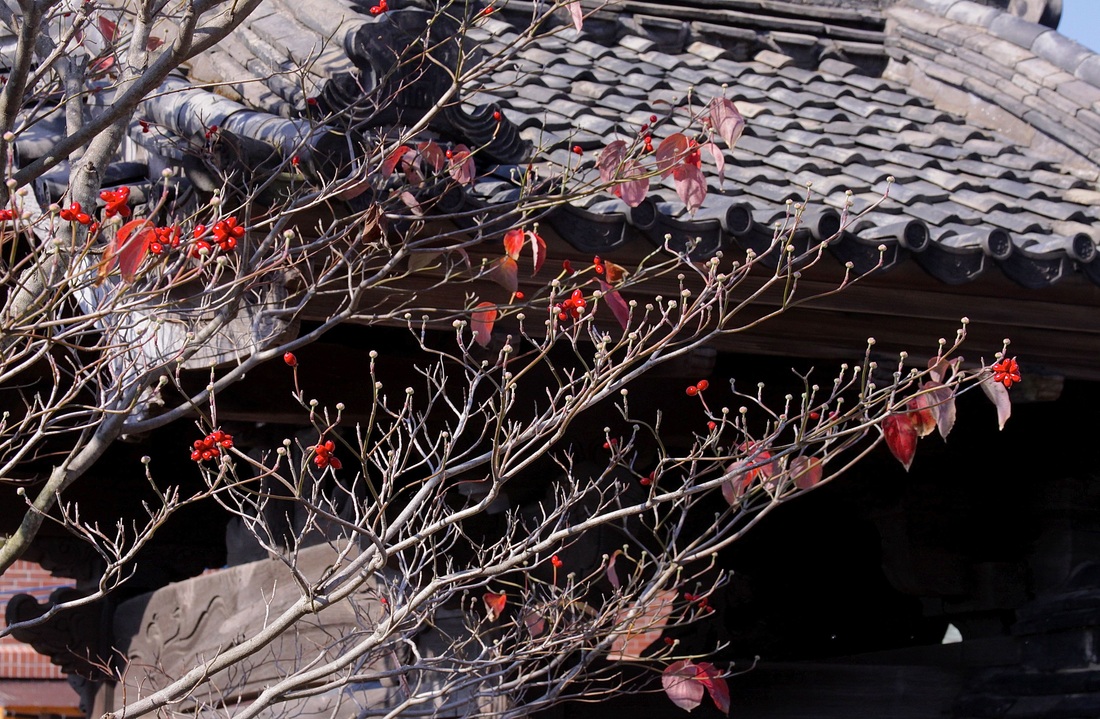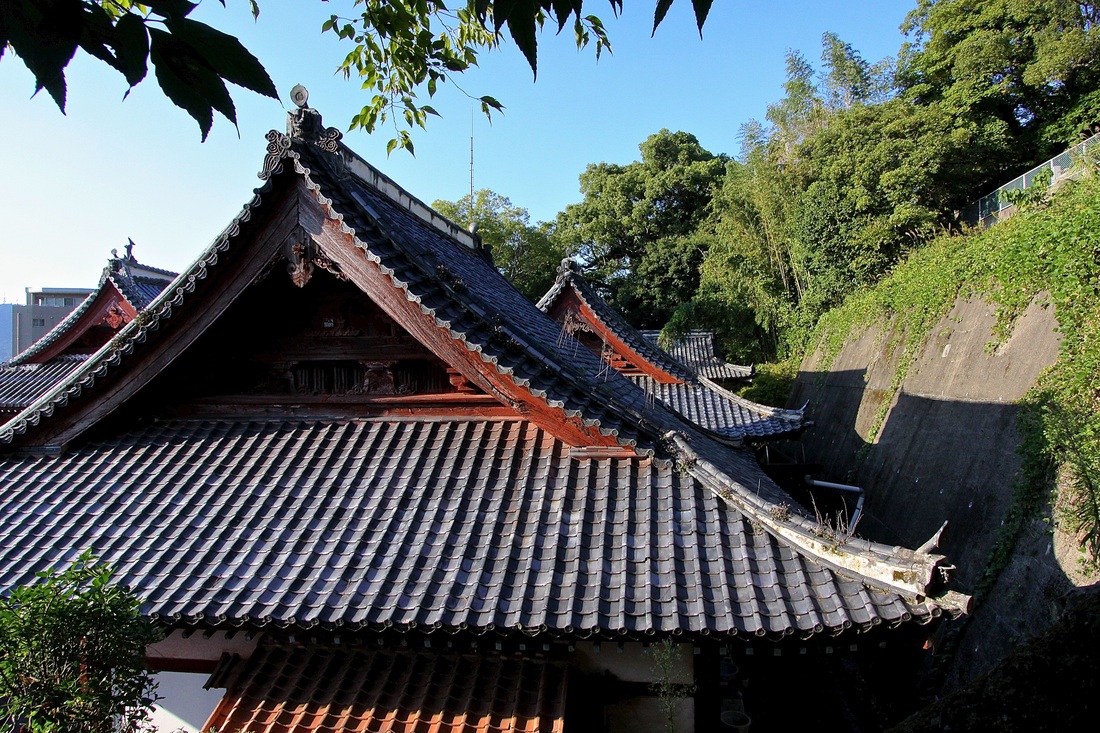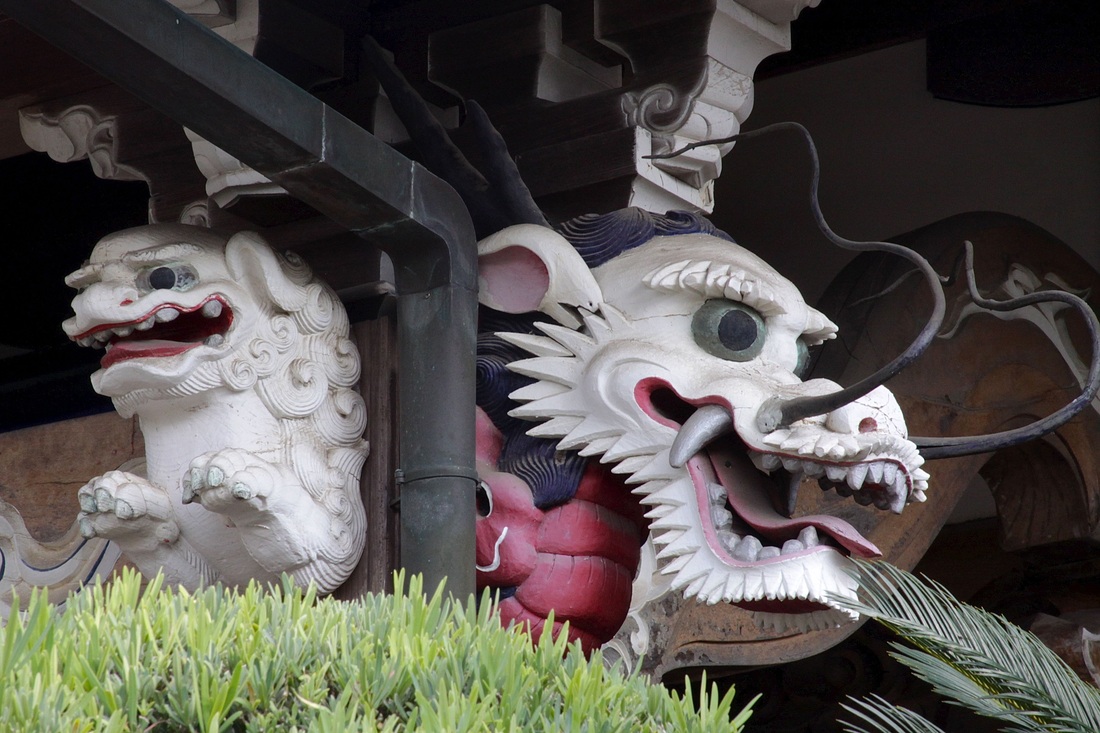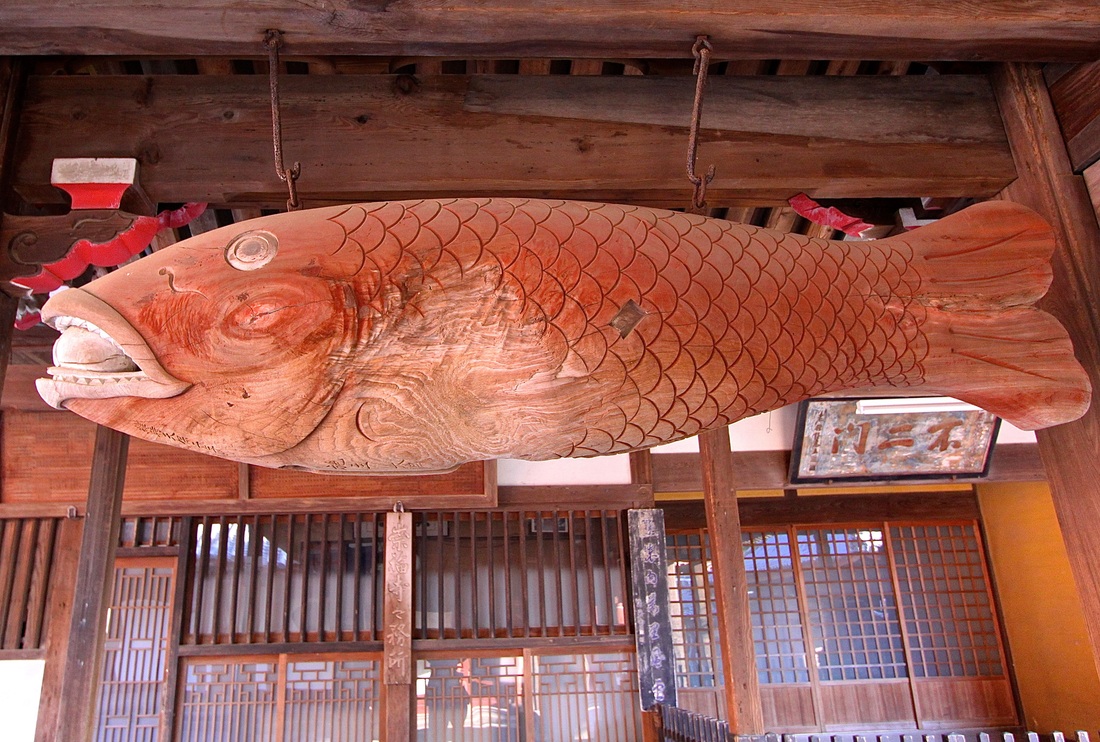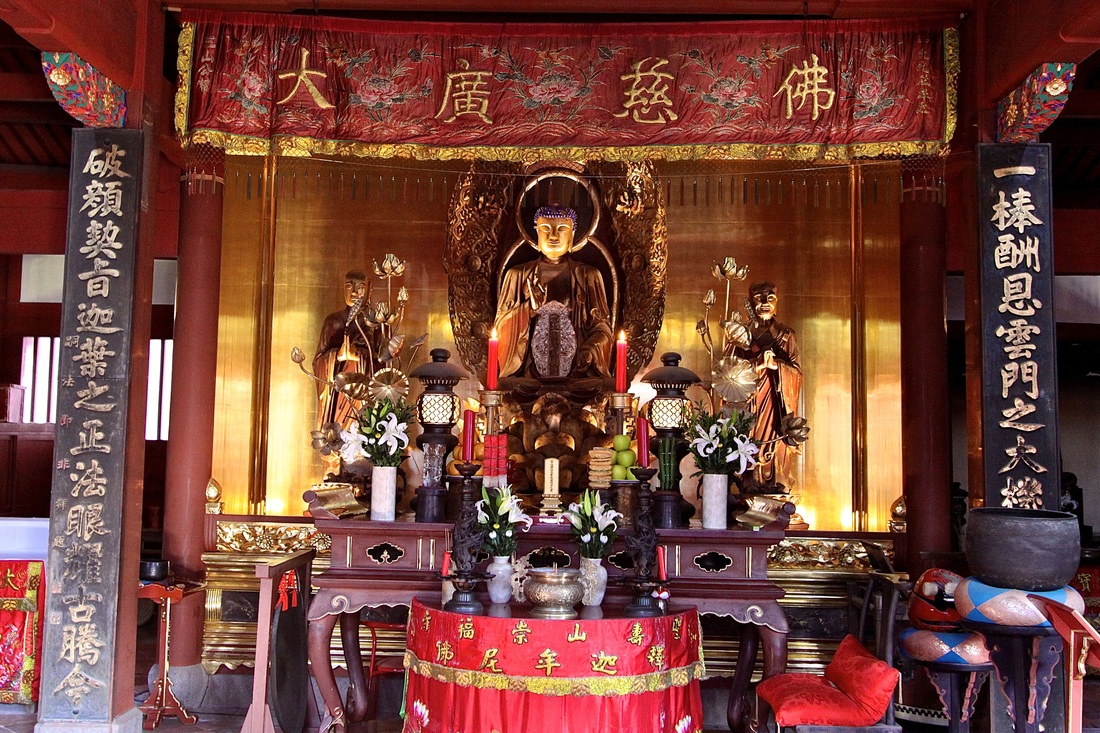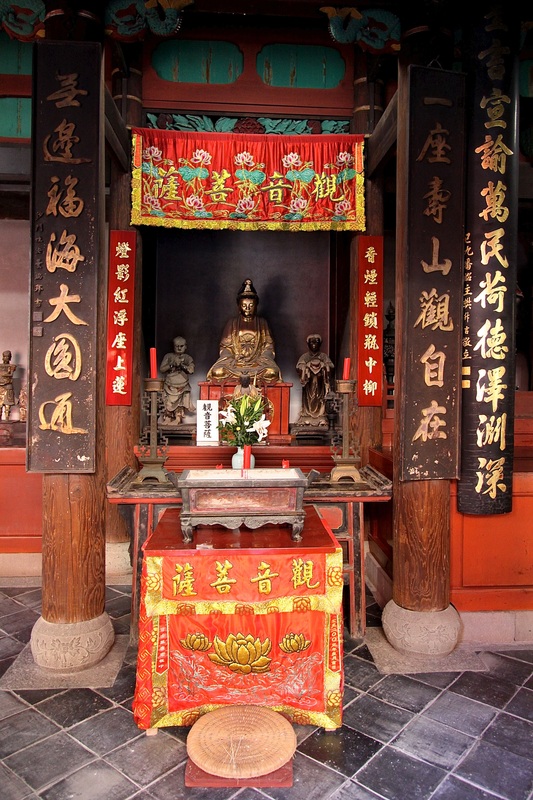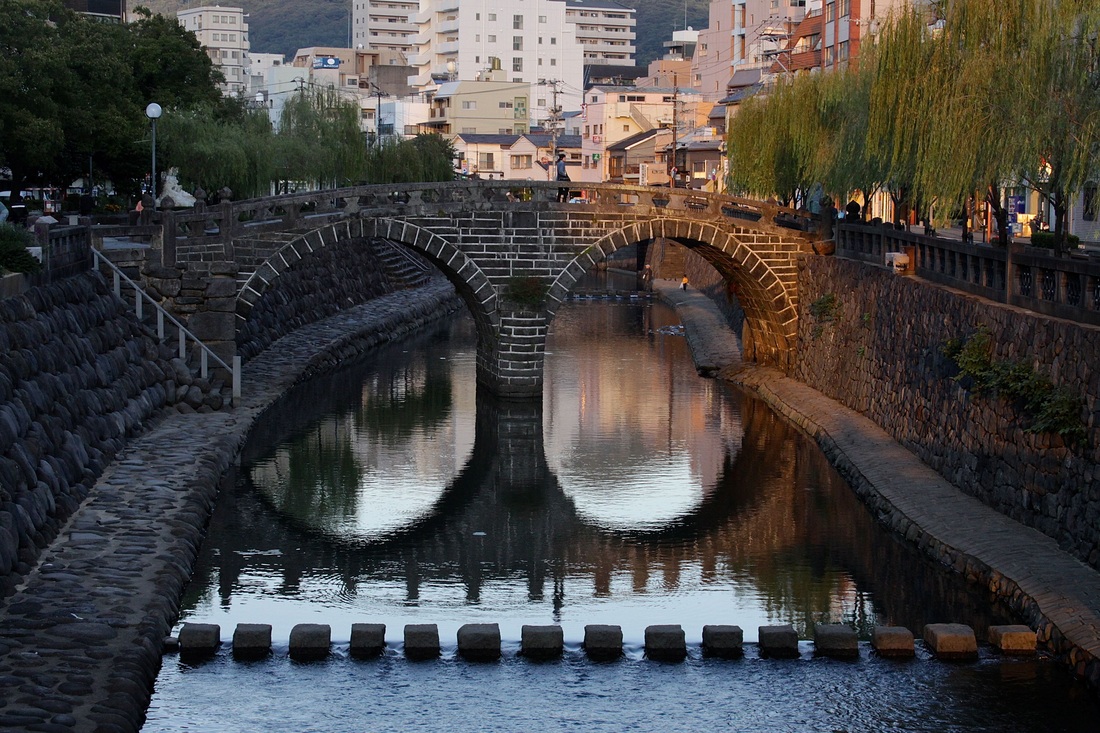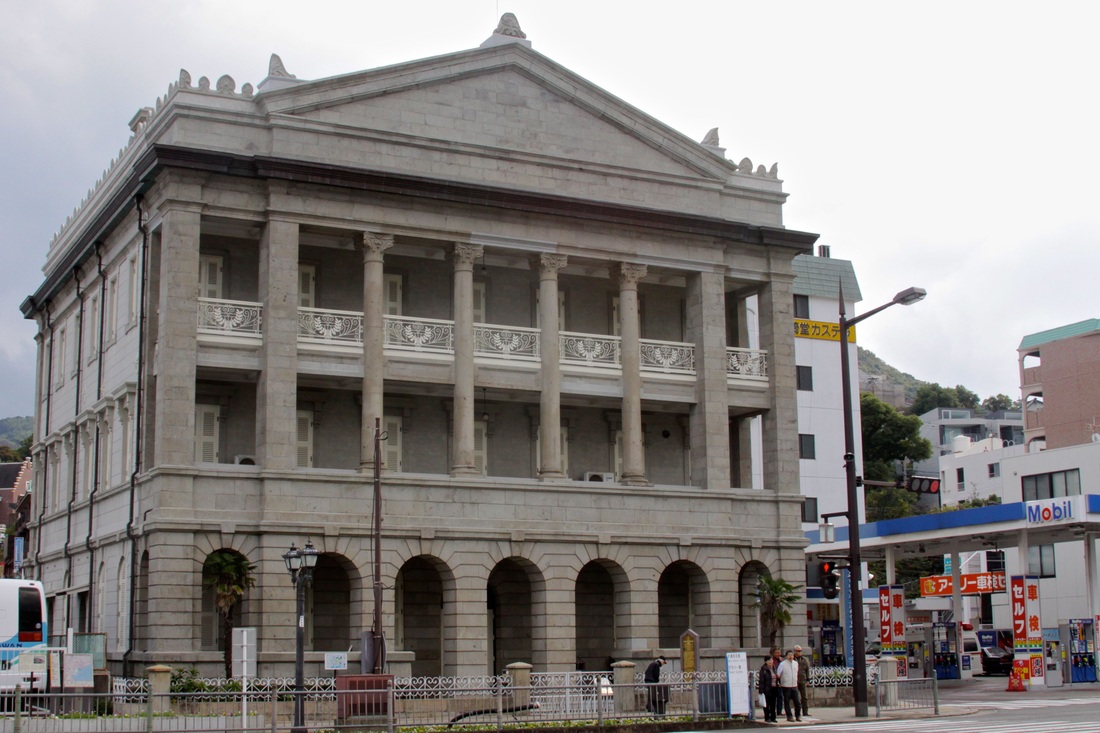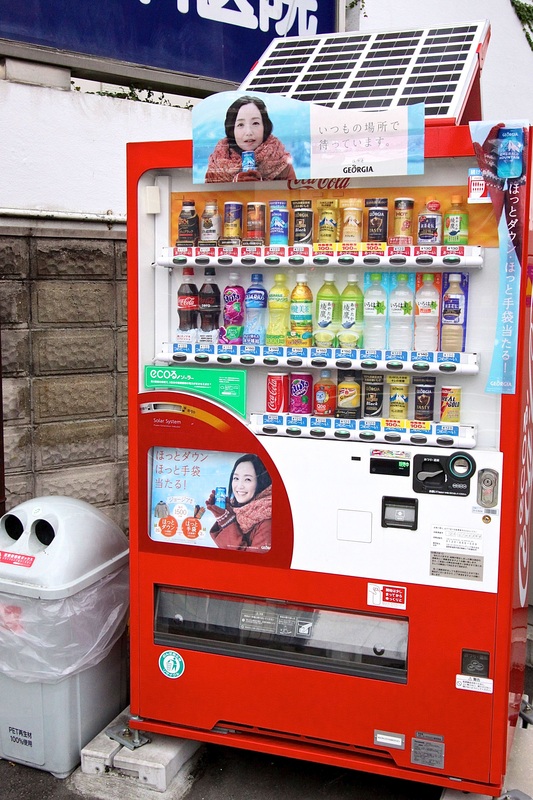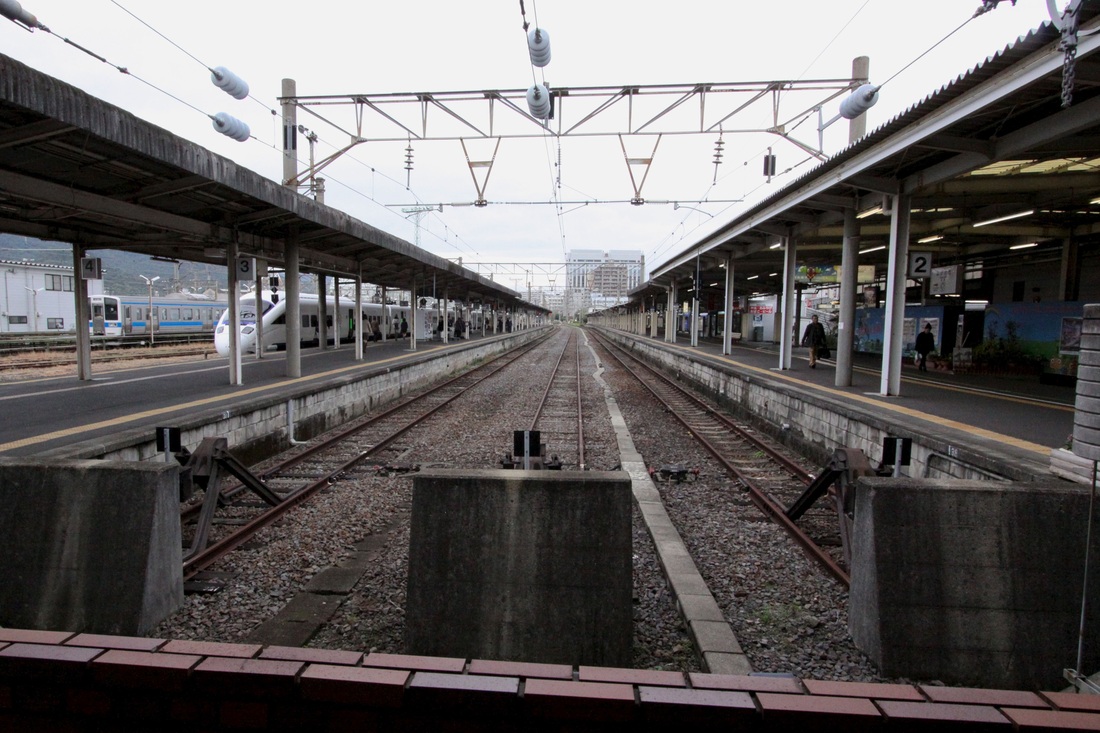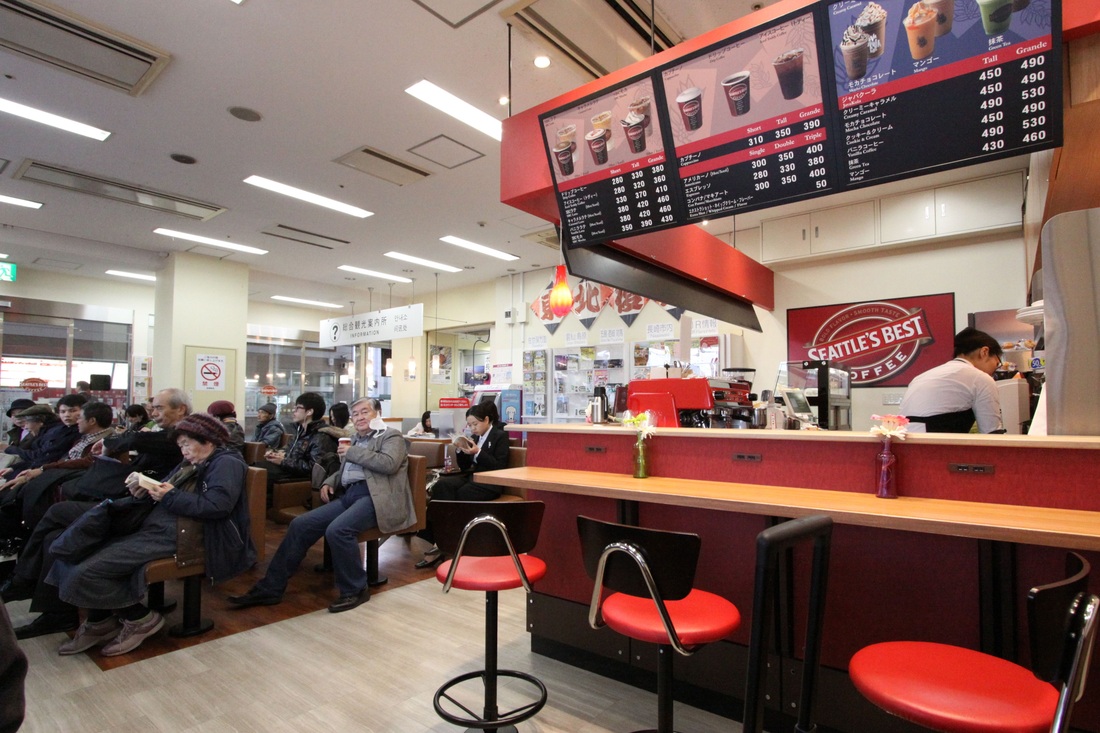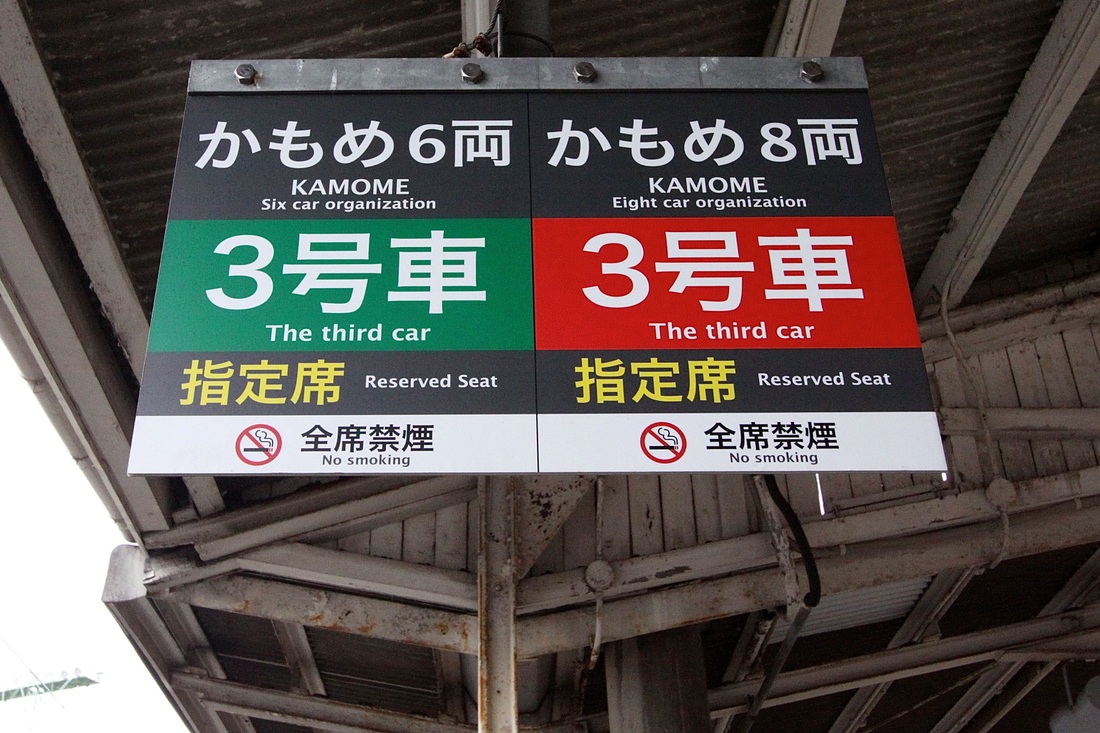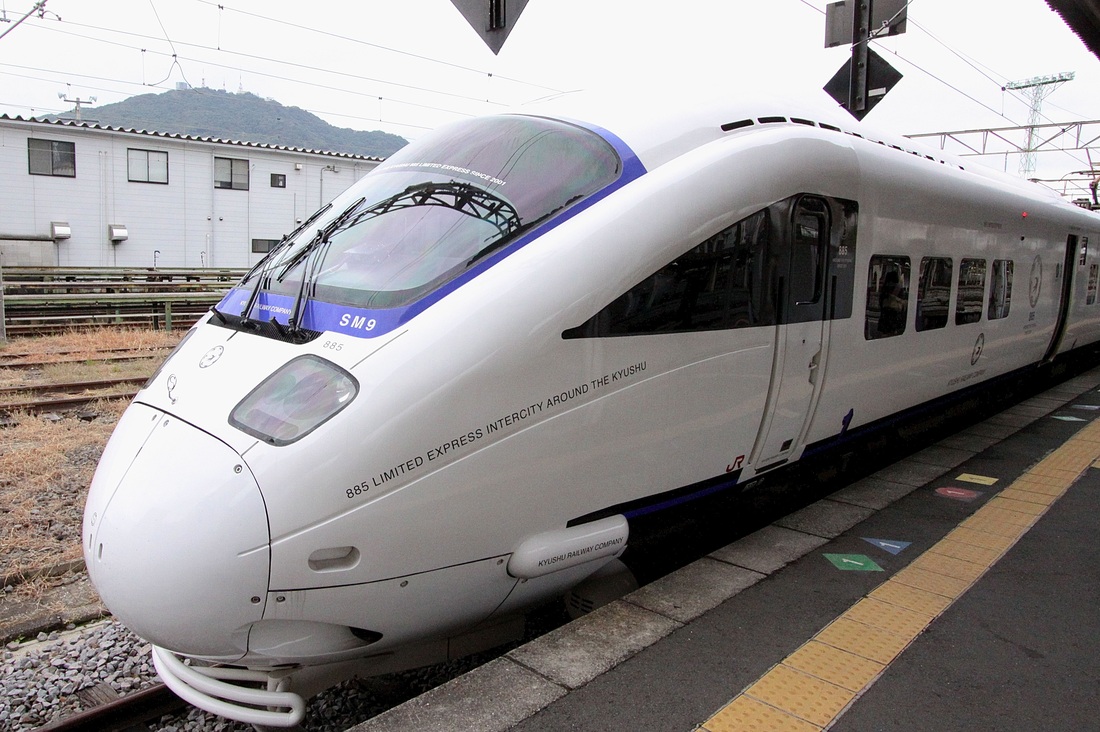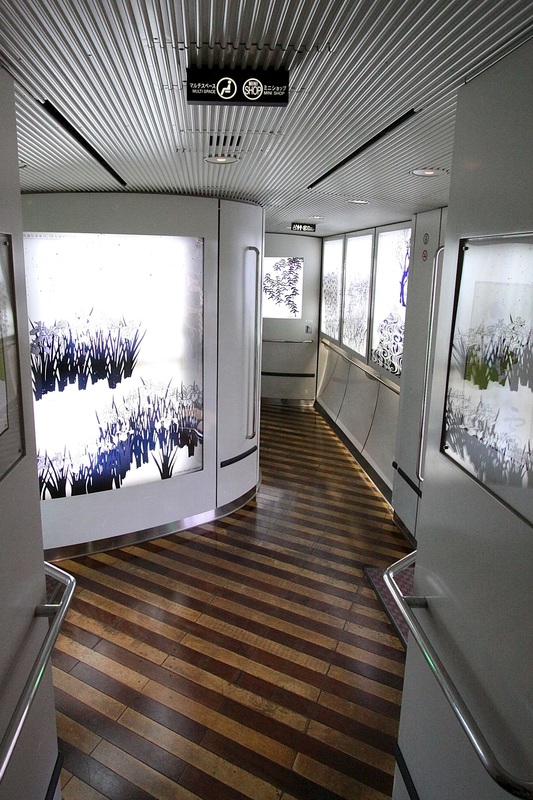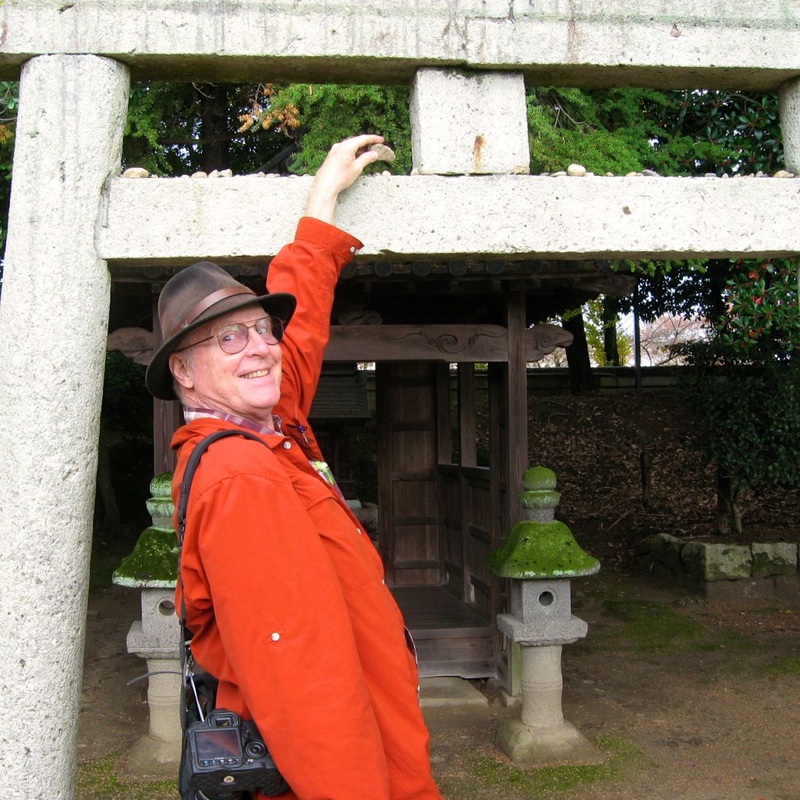So from Fukue, Goto to Nagasaki by Jetfoil:
Here is the bow "foil", which is lowered when underway to push the hull out of the water and make it fast.
From harbor to hotel was an easy walk, so upper floor rooms have a view up Urakami River valley and and up to the summit of Inasa Mountain, easily accessed by cable car...
…which I did by day in 1964 and...
…and by night this time. It is hard to tell, but those rice fields at the base of Inasa are gone…..
Nagasaki has a long and tumultuous history with foreign powers. In the 1600's the Tokugawa government got serious about reigning in foreign influence, and built, then confined authorized Dutch personnel to Dejima, an island in the harbor.
Serious archaeological studies have found the site, modeled it, and ...
…are in the process of rebuilding it. The Japanese and the Dutch are good record keepers, so minute details of what was there are known, and are guiding the reconstruction.
Well, I doubt this pugnacious bubble head was found in the historical record, but, hey, it attracts the tourists…tho that tour guide on right seems to be fleeing the scene. Note the glass walkway, revealing some of the original stone foundations found.
As is common in reconstructed historical places, there are people in period costume about to answer questions and point the way to the toilets. Seems the visitors are in their "period" costumes as well.
The buildings are being done in faithful to the original design and construction techniques.
So very nice for those of us interested in windows: Japanese and ….
…Dutch.
As are interiors…down to have contemporary Dutch wallpaper manufacturers reproduce those of the the 17th Century.
Certainly the greatest calamity Nagasaki suffered at the hands of foreign powers ( as well as distant feudal ones) was the August 9, 1945 nuclear bomb. At an overlook a photo from October 1945 gives a then and now look at the place directly below the point of explosion. Besides, of course, the rebuilding of the cityscape, note the reforestation of the ridge line.
The nearby Peace Park has a long formal walkway with statues from around the world. Women with babies are prominent themes. The Peace Statue, and Park, were established in 1955…the 10 year commemoration of the event.
The Park and area around the statue were much simpler in 1970….
…than now, which has a reflecting pool keeping folks from sitting at his feet, to say nothing of reading the plaque.
Visiting students are a bit more rambunctious these days. Seems photos of all jumping are the rage.
Nearby is the Atomic Bomb Museum, mostly built underground (hmmmm, energy conservation or nervous over another bomb???)
Of course there are folded cranes and ...
…rows of school children defending into the galleries below.
The final exhibit dealt with on-going nuclear issues in the world: Nevada and Washington States' waste disposal issues were part of it.
When Nagasaki rebuilt, they provided streets for future vehicle traffic as well as existing street cars, so, when indeed the private automobile wave arrived, there was still room for street cars. Some of them refurbished old ones.
It is a pretty simple system, and signage is in both Japanese and English.
But the rolling stock is not stuck in the past: this unit is pretty up-to-date.
Asare some of the passengers.
And of course there are shines and temples. Suwa Shrine is a popular one...
…for visiting school kids to visit. Unlike days of yore, today's high schoolers are allowed to break off into small groups and get around the town without adult supervision. I wonder if the one whose purse is on the right remembered it after a round of checking whatever on her cell phone….
Just in case they have not learned the proper steps in symbolic cleansing oneself, a small cartoonish drawing reminds one.
Over on the side is a garden with a pond with a variety pack of koi.
And on the other side of the shrine, a long line of orange torii means only one thing:
Foxes!
The Inari Shinto diety is associated with rice, and, by modern extension, commercial prosperity. The sect's servants are shape shifting the foxes (sometime male, sometime female, sometime…hard to tell) and one is welcomed by one with a wish granting ball (note is highly polished surface from many many wishes), ...
The Inari Shinto diety is associated with rice, and, by modern extension, commercial prosperity. The sect's servants are shape shifting the foxes (sometime male, sometime female, sometime…hard to tell) and one is welcomed by one with a wish granting ball (note is highly polished surface from many many wishes), ...
…and another with a key to a rice granary in the other.
Often side shrine buildings are small, just enough space for a daily visit to offer a coin, ring the bell, and pray for a successful day at the office.
Foxes are commonly found, but this one is quite unusual, It is called a "stop lion", since, if one wishes to stop doing something, like smoking, one can purchase a string, attach to a leg, and pray for the will power to do it.
Thoroughly in the good graces of many deities, foxes and fish, the shrine visitor defends the step back through the line of torii, and on to ….
….see what's happening in Buddhist temple on the other side of the valley. Kofuku-ji's entry gate shows Chinese influence with its rounded arches, sweeping hip roof ridges, and decorative top ridge line. The welcoming lion is pretty Chinese looking too.
The next gate is a bit simpler, in line with its full name, and the sign board above: "Kofuku Zen Temple". The poetic couplets one either side is rather typical of Chinese gate design as well.
Time in temple life is marked by the sound of hitting a wooden fish with a wooden mallet.
Inside these large halls are alters where prayers (and donations) may be made to Buddha and two attendants, or...
to the Bodhisattva, Avalokitesvara (Chinese: Guanyin; Japanese: Kannon), another shape shifter, but in China and Japan often female: the Goddess of Compassion and Mercy.
In the base of the valley is Nakashima RIver, and this double arch bridge, fondly called "Spectacles Bridge". Built in
Where, some 270 years later, in 1904, The British bank, HSBC built what was then the largest western style building in town. It had other uses, but since 1991 restoration it is now a banking museum.
It is nice to see the Japanese vending machine industry is getting on the " Go Green" bandwagon, with photovoltaic panels on top generating electricity to offer both chilled (with blue labels) and heated (red) drinks. Since this was late November, the advertising imagery is featuring hot drinks in the hands of a bundled up lady.
So, FINALLY, the end of the line, and of the photo journal. Nagasaki is at the end of a JR line and still bereft of a Shinkansen, though one is forging its way towards it. Meanwhile, unlike Hakata, it has a pretty laid back station, but….
…not without modern amenities, Seattle's Best Coffee, ...
…bi-lingual signage ("consist" must be too esoteric a word for the general traveling public, so "organization" will just have to do)...
…and certainly spiffy rolling stock.
A car's end, with toilets, vending machines, and telephone booth.
If one tosses a stone up onto a torii's top, it will bring good luck. Sometimes a short torii and tall person can do it without much effort. May all your stone tosses be successful.
